Part III: 1985 to Present
Were there discernible differences between the years 1985 and 1986 at San Diego State, particularly in the major of Communicative Disorders and the newly formed College of Health & Human Services? After all, matters seemingly flowed fairly smoothly. Smoothly, that is, except for a tragic occurrence.
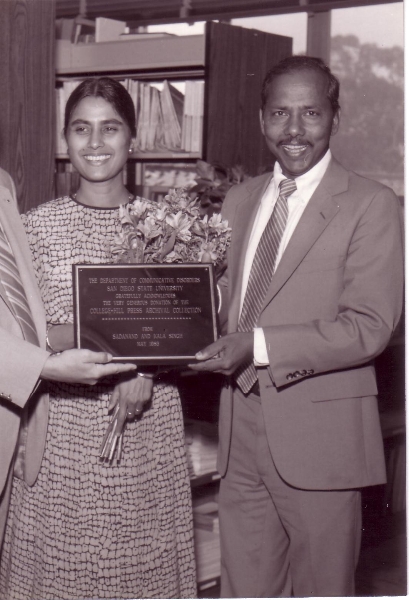
Subsequently, Dr. Singh established a memorial scholarship fund in his wife’s memory. As a result, many students have received financial support for their studies in the field of Speech, Language, and Hearing Sciences. As a side note, shortly after the Singh tragedy, a seat in the Lowell Davies Festival Theatre at The Old Globe was dedicated to Kala Sadanand Singh, a name designated by her husband to signify their union.1 Following his death in 2010, SLHS faculty member Marlowe Fischer wrote a tribute to Dr. Singh, his wife Angie and the Singh family that appeared in the summer 2010 issue of the California Speech-Language-Hearing Association magazine.2
A major difference between earlier decades and the period from 1980 to the present was the arc of the 1980s through 2013 which produced four Doctoral programs within the College of Health & Human Services. Though Part II of this history ended in 1985, with Part III picking up the history in 1986, there is timeline overlap in endeavors between Part II and this final chapter. In 1980, the Graduate School of Public health was created as part of the new SDSU College of Health & Human Services. Over the years, the GSPH has developed a highly respected Doctor of Philosophy degree, in addition to its Masters of Public Health and undergraduate degrees. The Ph.D. in GSPH has three concentrations: 1) Epidemiology; Health Behavior; and Global Health. The Trustees of California State University and the University of California award it jointly.3 In SDSU, A History in Word and Image, historian Raymond Starr noted the state of California Master Plan allowed state colleges to offer doctorates in conjunction with other universities.4
Alumni continued to perform and achieve admirably in their fields of specialization. The College of Human Services awarded its 1985 Monty to Brian E. Walden, Ph.D., a 1967 graduate of the Speech pathology and Audiology department, and an excellent example of the attainment levels of alumni of the program. Walden was, at the time of the Monty ceremony, supervisor in the research section of the Army Audiology and Speech Center at the venerable Walter Reed Hospital. It’s an impressive roster of outstanding individuals and teacher-scholars who conducted high-level research, provided services to patients and clients, and engaged in teaching activities.
1985
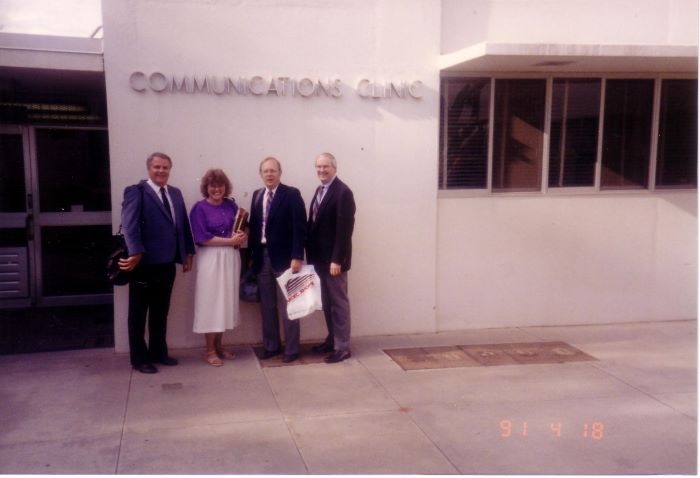 Open the image full screen.
Open the image full screen.
The presence of Dr. Barbara Williams Hodson on the faculty added to the reputation of the Department of Communicative Disorders. She joined the CD faculty in 1981 and left in 1988, moving to Wichita State University. While at San Diego State, she was chosen Outstanding faculty member by students, as were Dr. Newhoff and Dr. Launer, among others at various times. Dr. Hodson published voluminously in the area of phonology and, in 2009, ASHA awarded her Honors. Dr. Barry Jones (CD Associate Professor) assumed a new leadership role as Assistant Dean of Student Affairs in the College of Health and Human Services and also as the parent of a SDSU student.6
1986
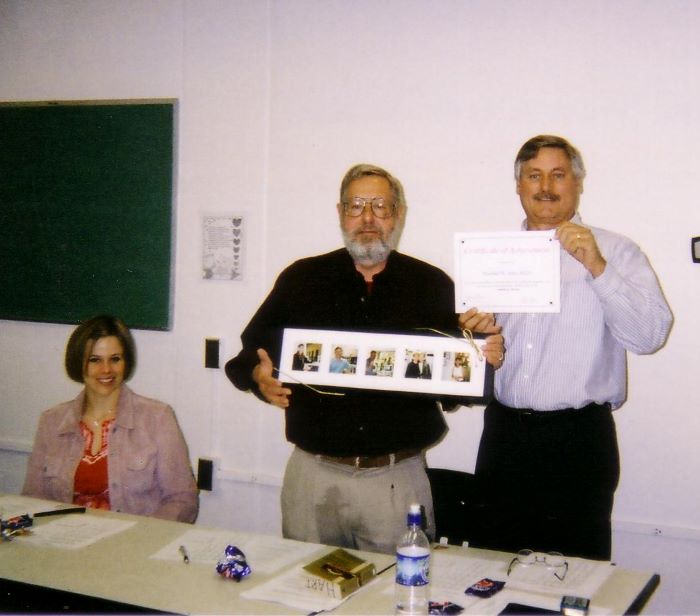
Other big leaps were just ahead, though obstacles were certainly encountered along the way. By 2013, 27 years later— more than a quarter of a century— the school has a highly ranked MA program in speech-language pathology and two highly ranked and greatly respected Doctoral programs in Language and Communicative Disorders and in Audiology, giving the college four doctoral programs, with the Doctorate from the Graduate School of Public Health and the newly added Doctorate in Physical Therapy. A good deal of collaborative and individual effort was spent getting to this point. The research grants and the dollars awarded between 1986 and 2012 multiplied significantly. There were many more refereed publications, and graduate students delivered scholarly papers on more frequent bases. In the 21st century, the name of the department changed again, from Communicative Disorders to the School of Speech, Language, Hearing Sciences, but remained in the College of Health & Human Services.
But, back in 1986, Communicative Disorders groundwork was being laid as a lengthy planning process finally promised the realization of the joint Ph.D. in language and communicative disorders. It was envisioned that seasoned Ph.D. faculty would guide doctoral students through the new joint graduate programs, sharing responsibility with designated University of California San Diego faculty. Though there had been promising times, with false starts, in the past, the 1980s really did provide the connections that ensured the reality of a joint CD Doctoral degree.
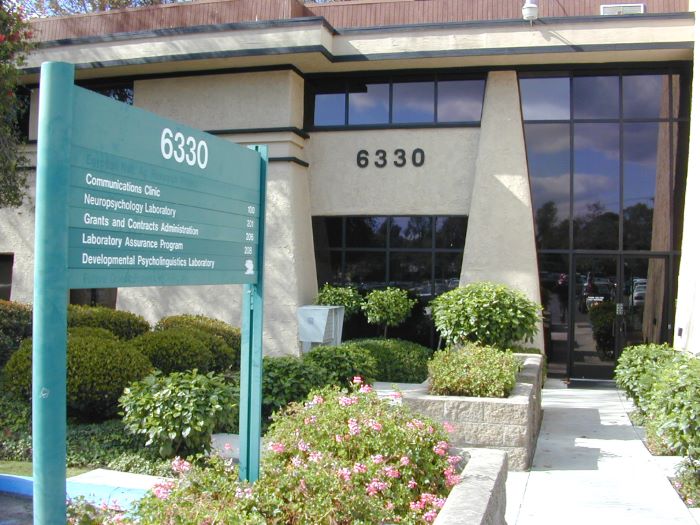
1991-1996
William C. Jones, the President of Whittier College, was the first commencement speaker of record at SDSC. That was in 1951. From 1951 through 1991, an amazing array of distinguished speakers addressed undergraduate and graduate students at all-campus commencement ceremonies. Thereafter, each university college held its own commencement gathering, with a separate speaker. The post-1991 format change was largely due to substantial SDSU student population growth, as well as the more specialized interests of each college. However, during the 40 years of a central ceremony tradition, an array of remarkably distinguished intellectuals, artists, jurists and scientists addressed graduating classes at San Diego State. In those audiences were students of speech correction in the Speech Arts major, then Speech Pathology and Audiology within the College of Professional Studies and Fine Arts, and later Communicative Disorders within the College of Health and Human Services.
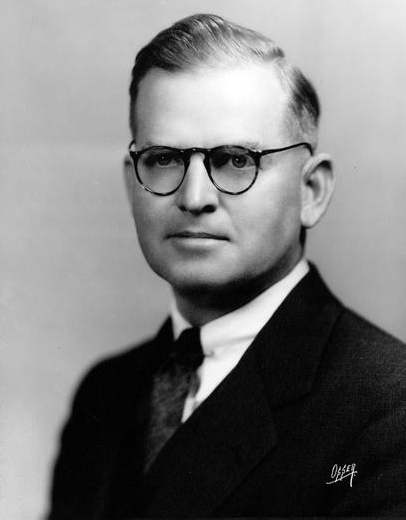
Dr. Paul Lewis Pfaff died on May 24, 1992. Dr. Pfaff, a co-founder of the speech clinic, had pursued the field of speech and language from 1932 on, as he worked with stutterers, voice disordered individuals and aphasics in private tutorials, in addition to his full time teaching load in the Speech Arts department. A celebration of his life titled “A Celebration of Thanksgiving,” was held at the Thursday Club on June 12, 1992. Invocation was by Nancy Reed, the same Nancy Reed who conducted the first SDSC Children’s Clinic for her MA Thesis, under the direction of Dr. Sue Earnest in 1950. Remarks were delivered by Dr. Earnest, Dr. Pfaff’s lifelong friend and colleague. Additional remarks were supplied by Andreas Brown, an alumnus who went on to own and run the famous New York City Gotham Book Store, and to receive a Monty Award, and Dr. Ed Nuttall, a distinguished alumnus. The greeting and final remarks were by the Honorable Richard R. Ault.
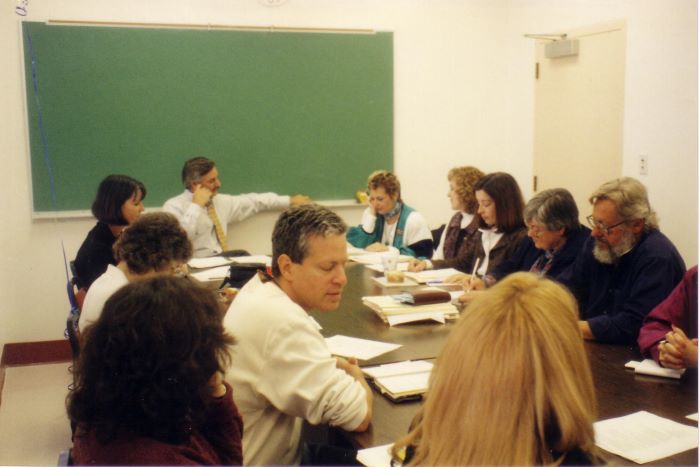 Open the image full screen.
Open the image full screen.
Budget cuts in the range of 5% were ordered across the CSU campuses in 1991. Dr. Thomas Day attempted to make those cuts programmatically, rather than evenly, on the campus, across all academic programs. The result was great dissension between faculty and Dr. Day, negative publicity locally, regionally and nationally, resulting in a “no confidence” vote by the Academic Senate. In the midst of all this consternation, the CD department continued to grow and strengthen. In the 1994-1995 academic year, there were 28,000 students at SDSU. But, in 1995, Raymond Starr raised a note of caution on the final pages of his history book. He noted, “Although the budget problems have shaken the institution, they have not seriously harmed it.” Now, shift to 2012, as SDSU underwent the most massive budget cuts in its history. The 1990s were a portent of what was to come, both in steadily improving quality of product and in weathering financial crises.
1997
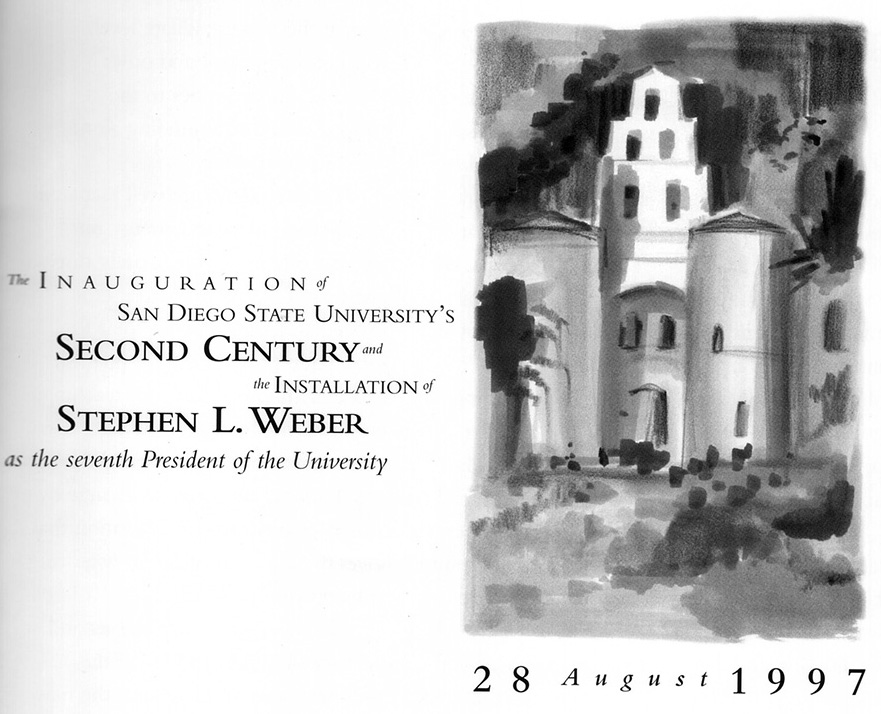
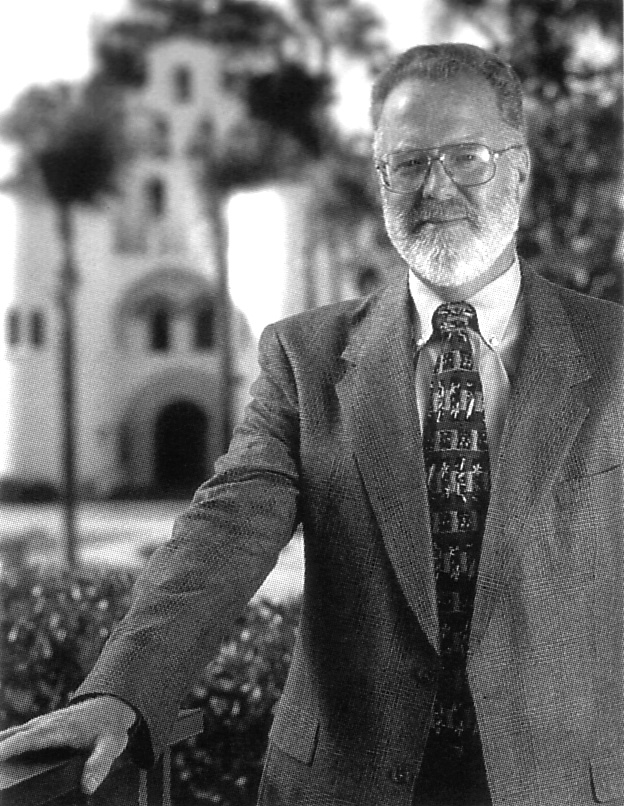
2002
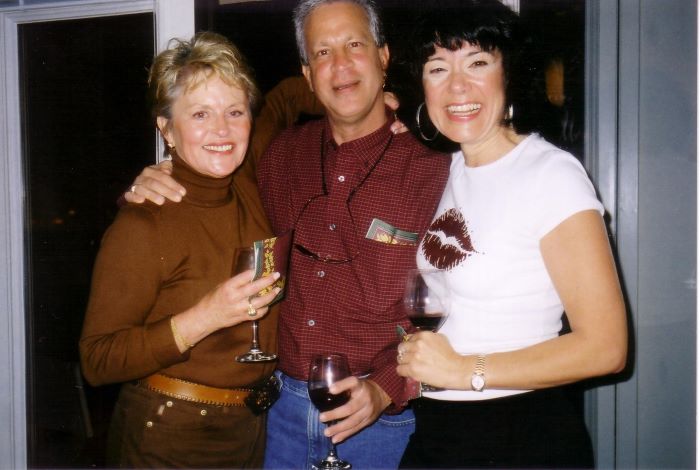 Open the image full screen.
Open the image full screen.
The clinical doctoral (Au.D.) program in Audiology was initiated jointly with SDSU and UCSD in Fall, 2003. Candidates for this degree were, and continue to be, carefully selected, to ensure the most positive experience for the students and to increase the likelihood of graduation. Dr. Steven Kramer, who piloted the Au.D. program at SDSU (2003 to present), estimates that 20% of the Au.D. candidates are SDSU undergraduates, 50% are from other places in California, and the remaining 30% are from outside California. While most graduate students enrolled in the Ph.D. program receive financial support, that is not true for the AUD students. Most of them take large loans to pay education costs, and Dr. Kramer states the students tell him it is worth it because audiology is such a strong professional field and, so far, there have been jobs for all graduates. When asked what, if anything has surprised him about the Au.D. Program since it was inaugurated ten years ago, he answered that he didn’t expect the number of applicants to the Au.D. program to remain high considering the expense to students. Since the inception of the Au.D.at SDSU, demand for the program has been tremendous, with a steady trend of approximately 100 applicants per year since 2006. Drs. Carol Mackersie, Laura Dreisbach, Peter Torre, and Arthur Boothroyd at SDSU, as well as Drs. Erika Zettner, Jeffery Harris, and Allen Ryan at UCSD have served as the core faculty for the Au.D. joint program for a number of years. Jacque Georgeson (Au.D.) at SDSU is the current Audiology Clinic Director. Another long time lecturer in the audiology program is Carol Branch (Au.D.). Other key faculty in the audiology program include Meghan Spriggs (Au.D.) and Lesli Guthrie (Au.D.).7
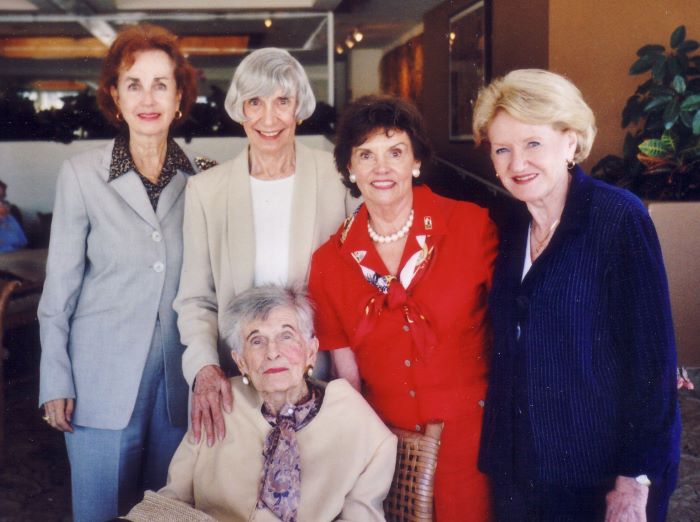 Open the image full screen.
Open the image full screen.
The last graduating class of the Deaf and Hard of Hearing Credential and Master’s Degree program was in 2006. Dr. Kathee Christensen, who so admirably led that program for decades, retired that year. A member of the last graduation class, Ingrid Swenson, has strong memories of her educational years in that course of study. “The teachers and students from previous years of this Education of the Deaf and Hard of Hearing program are an important part of the history of the school of SLHS. It would be so sad if we were overlooked.” Well said. Dr. Sue Earnest led students on trips to the John Tracy Clinic in Los Angeles in the 50s and 60s, and she pioneered San Diego State’s relationship with the Deaf and Hard of Hearing Program in San Diego City Schools. Dr. Harriet Kopp brought her national reputation in the field to San Diego State when she joined the faculty in the early 70s. Sally Wood furthered the work as she assumed the first position in the department as Clinical Coordinator of Deaf and Hard of Hearing services. Kathee Christensen took up that post in the late 70s, strengthened it and continued to guide the program until 2006. There is a long history of training and service for the hard of hearing and deaf, reaching back to 1950 with the first children’s speech clinic and even earlier when Dr. Pfaff worked privately with this and other populations of clients with communication challenges. Ingrid Swenson has good reason to be proud.
In recent years, the College of Health and Human Services, which includes SLHS, has required its undergraduates to have an international experience and study in a country outside the United States.9 That requirement is met by longer or shorter study stays abroad, depending on the student academic and financial circumstances. This initiative is just one example of the importance faculty and administrators place on diversity so that our graduates are better prepared to provide linguistically and culturally appropriate clinical services or conduct research in multilingualism. Another example of which we are very proud is the Bilingual Speech-Language Pathology Certificate we offer within the M.A. program under the direction of Dr. Vera Gutierrez-Clellen. It focuses on speech pathology services to bilingual children and adults with speech and language disorders. Graduates who hold this certificate are actively recruited throughout the USA. This specialization is in high demand. Bilingualism and international study are strongly emphasized in the major and across the university.
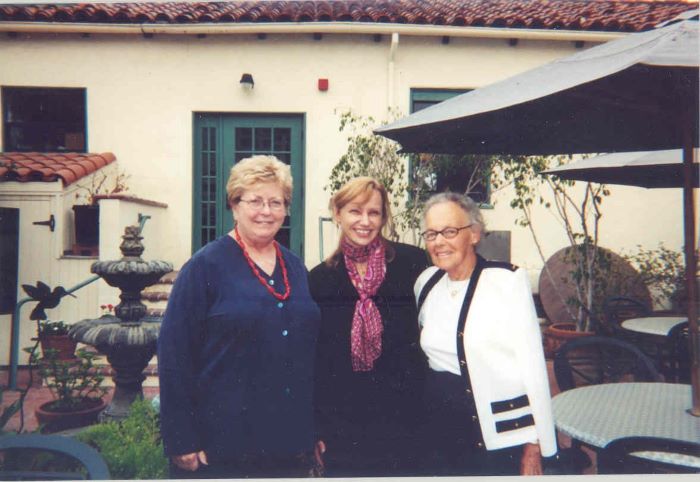
Following the 1989 site visit, ASHA’s Educational Standards and Professional Services Boards noted that the clinic in the North Education building which was developed in the 1950s was no longer adequate for either clinical training or service delivery. Consequently, under the leadership of then Acting Dean Dolores Wozniak, the department was able to obtain support for a new clinic. During the spring of 1991, the clinic moved into an 8,400 square foot space on Alvarado Court, adjacent to the SDSU campus.
2009-2012
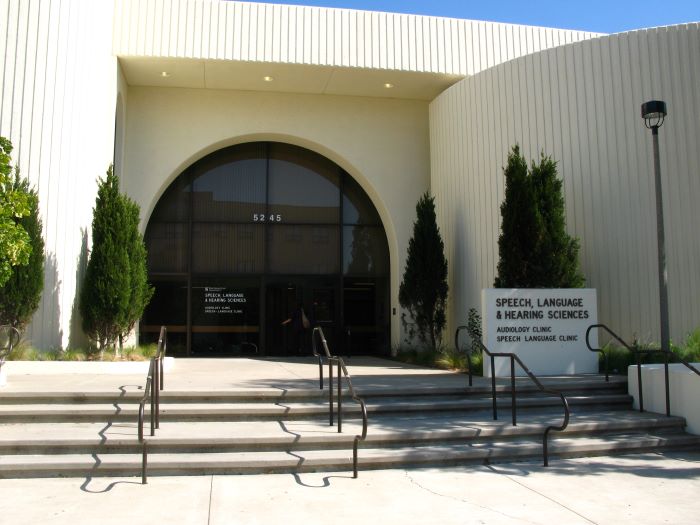 Open the image full screen.
Open the image full screen.
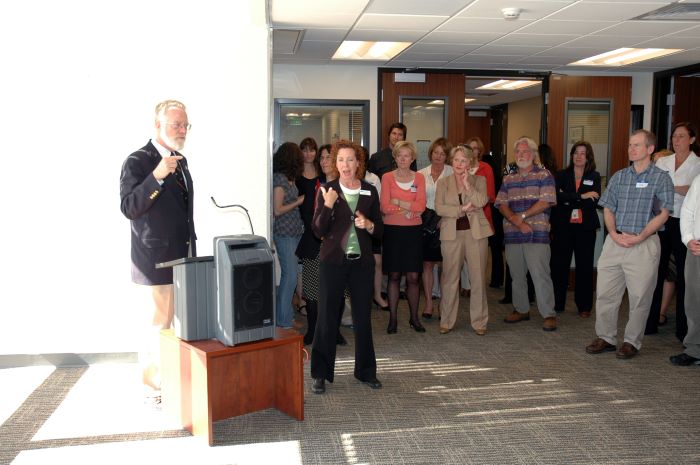 Open the image full screen.
Open the image full screen.
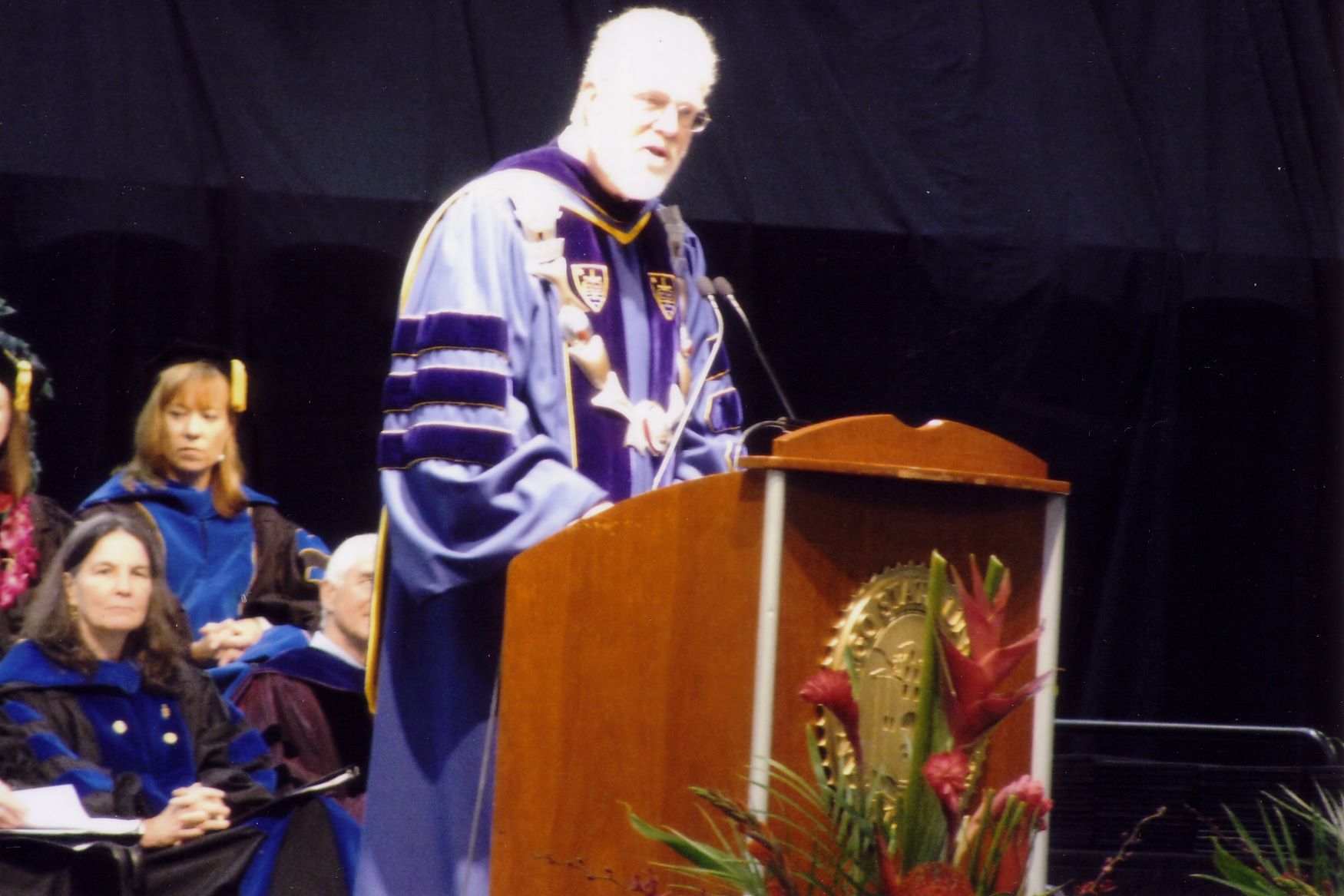
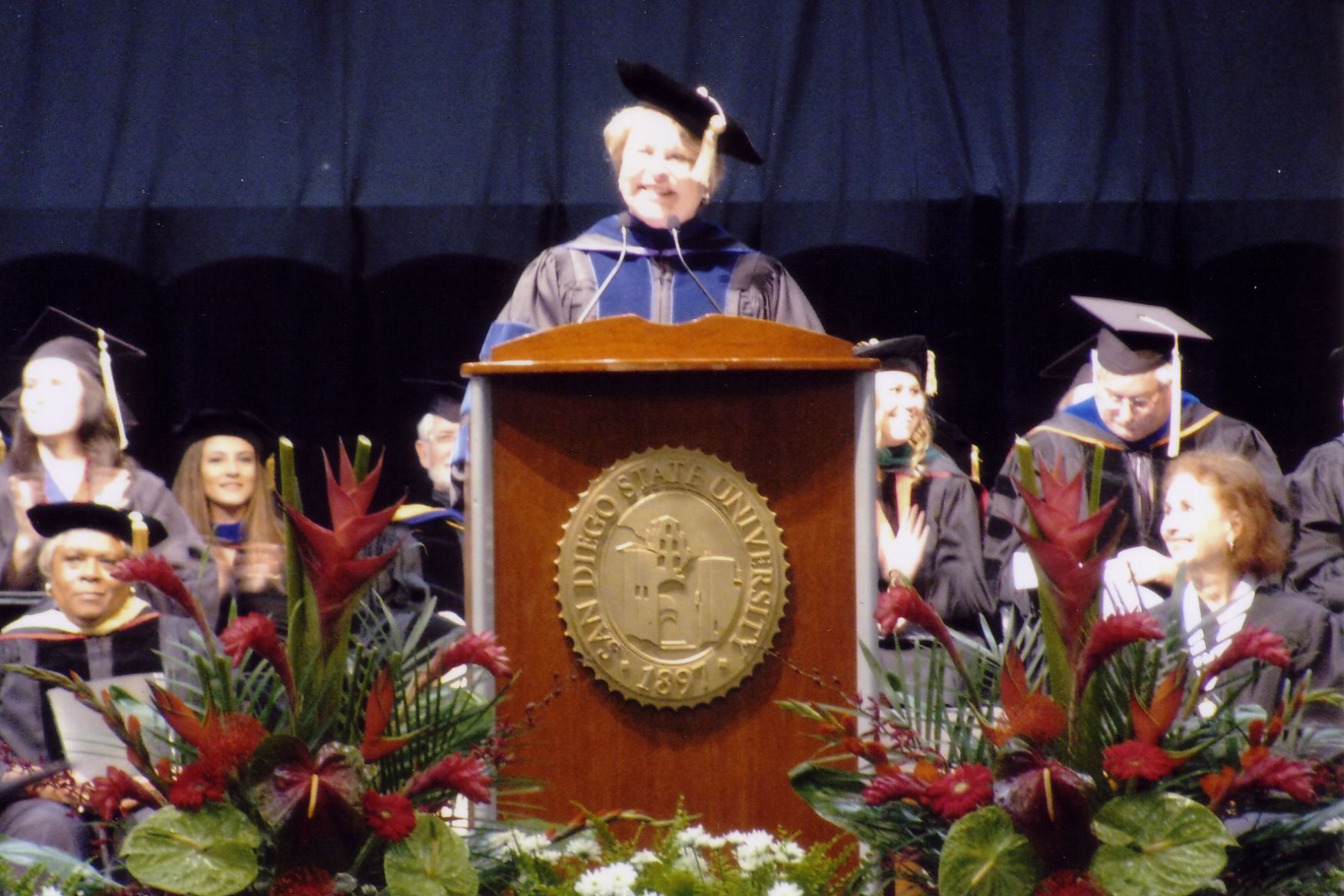
It was a great day at Cox Arena (later Viejas Arena) when the annual commencement ceremony took place in 2009. Students from all schools within the College of Health and Human Services took part in the valued ritual. Families and friends attended in support of the justifiably proud graduating students. SDSU President Stephen Weber addressed the audience, as did Dean Marilyn Newhoff.
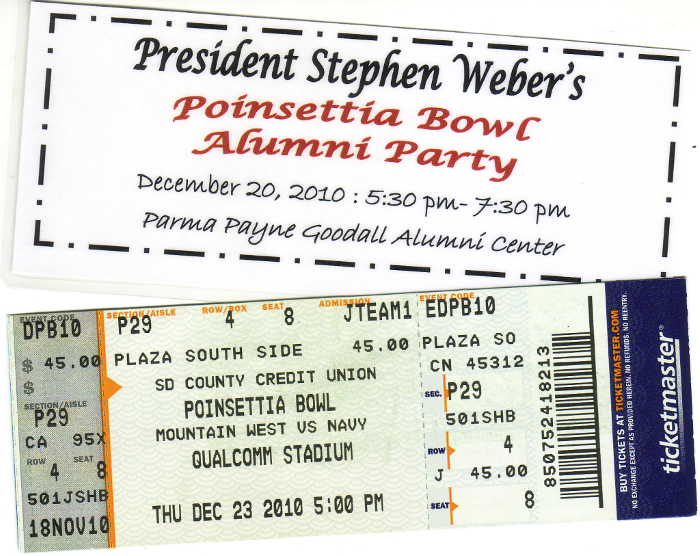
Alumni of SSLHS, such as Penny Cohen, who graduated from the program in 1985, regard their training as the best available anywhere. When interviewed on December 7, 2012, Cohen said spontaneously, “I was at San Diego State at the very best time with the finest faculty.” She particularly lauded Dr. Hodson, but also felt all of her instructors brought the newest information to the classroom and clinical settings. Cohen has practiced as a speech-language pathologist since her graduation, and, in 2012, continued to manage a successful private practice.11
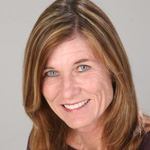
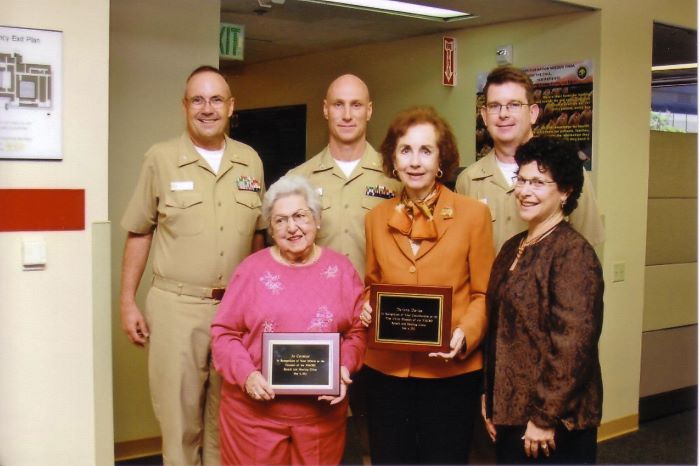 Open the image full screen.
Open the image full screen.
2009-2012 years were marked by severe budget cuts in the CSU system, with corresponding cuts at the CSU colleges and universities. SDSU President Weber retired in June of 2011 and was succeeded by Dr. Eliot Hirschman. The Chancellor of the entire CSU system, Charles Reed, announced his intention to retire in May of 2012 and the new Chancellor, Timothy White has since been appointed. Meanwhile, the state of California has experienced dire financial strains, and has been less able to provide sufficient dollars to traditionally funded state higher education institutions. Therefore, student fees have been repeatedly raised and there are aggressive measures to bring in outside sources of funding. Among the many accomplishments during Reed’s tenure is the strengthening of veterans’ transitional programs within CSU. SDSU currently has more than 1200 student veterans.13
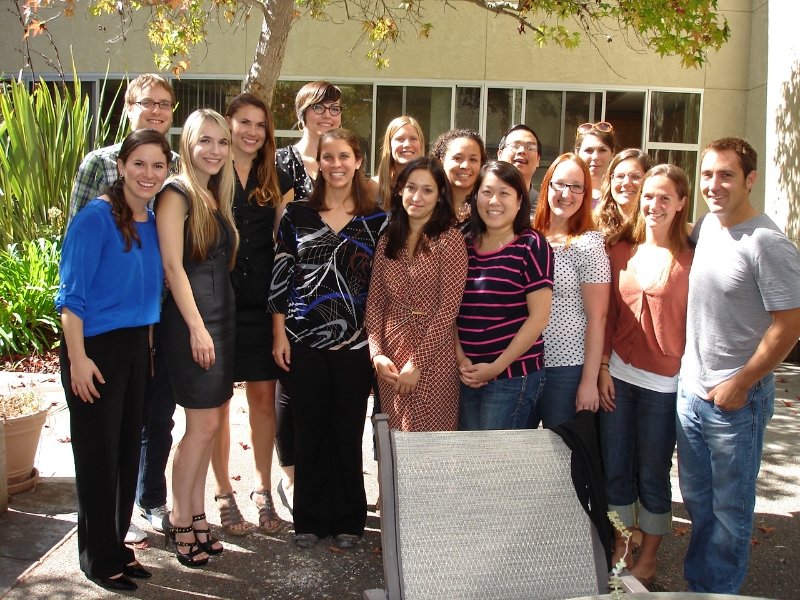
PostScript, the SDSU Retired Faculty publication (vol. XXVII, Spring, 2012) featured an article by SSLHS Professor Emerita Kathee Christensen about her work as a volunteer Docent at the San Diego Museum of Art.15 At the time the article was published, Christensen had been leading tours for children and adults for four years and was in the process of developing a program to include tours in American Sign Language (ASL) for deaf individuals. With the addition of ASL, that brings the total number of language tours to eight. When Dr. Christensen retired from SDSU, she enrolled in and completed the two-year intensive Docent-Training program, and that led to her tour leader activities. Creating an ASL tour was a natural evolution. SDSU has long emphasized collaboration with the community and Dr. Christensen’s continued work with the deaf and hard-of-hearing, through volunteerism, is a fine example of teacher-scholar activity in communities. Other examples include Diane Williams (SLHS Professor Emerita), the Audiology Clinic Director until 2001, who returned to the clinic following her retirement to support audiology until the new director arrived on campus. Dr. Thile has successfully continued his private speech pathology and counseling practice. He has now been in the field for more than 60 years. He also stays in contact with SDSU, the school from which he graduated and the one in which he taught for numerous decades.
Within the last few years, two major educational figures with ties to SDSU have been honored as Remarkable Leaders in Education by the School of Leadership and Education at the University of San Diego. Both of these individuals played a large part in securing the working relationship between SDSU’s speech pathology and audiology services and special services within San Diego City Schools. The first was Barbara MacNeil, Ed.D. who passed away in 2005. Barbara forged strong ties with San Diego State as she guided the City Schools Special Education program for the Deaf and Hard of Hearing. Her expertise grew from her early experience of being rejected as a candidate for the teaching program at State because of her speech patterns, due to her inner ear damage and hearing loss acquired when she had measles. This rejection took place before the passage of the Rehabilitation Act which extended opportunities for students with disabilities to be hired in classrooms. Prior to that, it was not at all unusual for those hearing impaired college students whose speech patterns or intelligibility were affected by diminished hearing to be denied admission to teaching credential programs. Before passage of the Rehabilitation Act, students with communicative disorders were counseled to enter fields other than teaching. The rationale was that speech and language of teachers were models for students. There was a fear among educators that children would imitate the speech of hearing impaired teachers. There was also concern about the ability of a deaf teacher to control a classroom, to direct learning behaviors. All of these concerns proved to be non-issues after the Rehabilitation Act allowed hearing disordered teachers into classrooms. There has been tremendous progress in awareness and understanding during the last 40 years.
The second designated Remarkable Educator in Education who worked collaboratively with the CD major was Mary Catherine Swanson, who founded AVID (Advancement Via Individual Determination) at Clairemont High School in the 1980s. By 2013, AVID has had a major impact in high schools throughout the world. Dr. Edmund Thile knows first-hand the great value of AVID, which was utilized to help minority and urban students succeed in gaining admission to and succeeding in colleges and universities, specifically San Diego State. Dr. Thile obtained H-COP grants at SDSU which mentored and tutored unprepared students for college level work. Avid provided a bridge that prepared high school students for college while H-COP assured that those at-risk students would be given levels of academic and cultural support necessary to succeed.
After achieving national and international recognition in the field of speech-language with emphasis upon cultural awareness/difference/diversity, the multilingual Lilly Cheng, Ph.D., retired from SSLHS and became the managing director of the Confucius Institute, sited on the SDSU campus. In her new role, Dr. Cheng continued her international outreach activities.16 Other American universities offer similar U.S.-China programs. She was recognized for her many contributions and was a 2013 recipient of the Honors of the Association from the American Speech-Language-Hearing Association.
A reception, hosted by Provost Nancy Marlin and Dean Marilyn Newhoff, was held on September 10, 2012 at the Parma Payne Goodall Alumni Center, and it emphasized the CHHS International Experience. Since all CHHS majors fulfill a requirement to study in another country separate from the U.S., however brief or lengthy, this reception reinforced the college and university commitment to international education. Those in attendance were current and former faculty and staff, alumni, and friends of the university.
2013
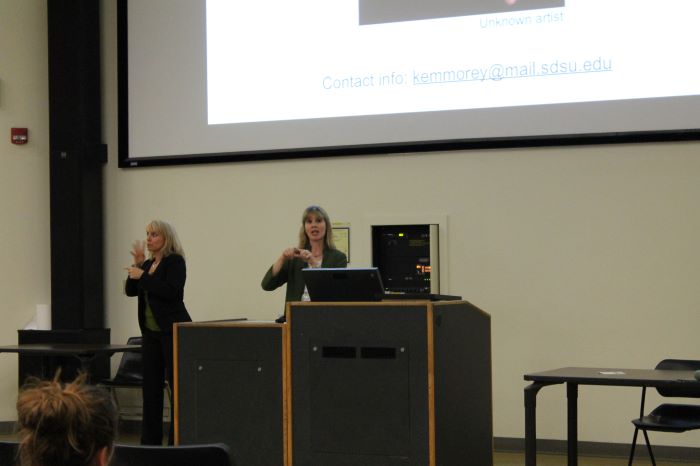 Open the image full screen.
Open the image full screen.
Long time SLHS Director Beverly Wulfeck remained in her position, a job she has had for more than a decade. The long-term continuity provided by Dean Newhoff, Director Wulfeck and many other faculty members has offered stability at a time of amazing growth. The quantity and kinds of research, the number of doctoral programs, the great increase in multicultural training and the ever enlarging world view have resulted in a much more complex and sophisticated school than was the case in the early 1980s, where this history chapter began. Yet, the art and science still exist, side by side. But, the science now is beyond anything imagined in 1983. Quantification and human empathy are both required in the field, so clinicians and researchers must be nimble as they incorporate the newest information into their plans. They are remarkable professionals in an intellectually stimulating field.
In 2013, tenure/tenure-track faculty in SSLHS were Professors Barlow, Emmorey, Gutierrez-Clellen, Kramer, Love-Geffen, Mackersie, Newhoff (Dean, CHHS), Shapiro, and Wulfeck, Associate Professors Nip, Pruitt-Lord, Torre and Dreisbach-Hawe and Assistant Professor Blumenfeld, all highly productive and successful scholars and teachers who continue to be well regarded in the U.S. and abroad. Faculty members hold advance degrees in many disciplines including audiology, hearing science, psychology, linguistics, cognitive science, and communicative disorders. Their research interests are equally diverse. A review of faculty profiles documents research initiatives that include studies of speech, language and hearing development and processing, adult and child communicative disorders (monolingual, bilingual, cross-linguistic, sign/spoken languages), pediatric and geriatric hearing disorders, hearing amplification and digital technology, relations between HIV/AIDS and hearing loss in children and recreational noise exposure and hearing loss. Faculty employ cutting-edge techniques such as real-time processing, electrophysiology, and functional brain imaging in order to better understand the neural correlates of speech, language and hearing development and disorders to better inform theories and contribute to more efficacious diagnostic and treatment methods.
The School’s Lecturers also make significant contributions to SSLHS through academic teaching and/or clinical supervision and training. Charlotte Lopes, M.A. (1985 alum) who has served as the Speech-Language Clinic Director since 1993 and Jacque Georgeson, AuD. who joined the faculty in 2005 as Audiology Clinic Director provide leadership in accreditation, clinical service and training. They work with an able group of faculty, many of whom have served for several years and provide outstanding training in speech-language (Fischer, Kotas, Schmitz, Turner, Catterall, Dorricott, MacRae, Thorpe) and audiology (Boothroyd, Branch, Guthrie). Together, they provide expertise in a variety of areas including assessment and treatment of speech, language and hearing disorders in pediatric and geriatric populations, voice disorders, aphasia, hearing amplification systems, bilingualism, assistive communication devices, American Sign Language and dysphagia, to name a few.
The School would not be able to meet its academic, research and clinical missions without the support of outstanding staff members Janet Park, Marla Fulton and Matt Wilson and those who served SLHS prior to retirement (Wendy Esterly, Charlotte Kingston, Jill Baumgartner). They serve students, faculty, staff and administrators with professionalism and commitment that is much appreciated.
Over the years, SLHS alums, family members, faculty, staff and friends also provided significant program and student support through their philanthropy (e.g., donations, planned giving, endowments). This includes programs such as the Sheila and Jeffrey Lipinsky Family Doctoral Fellowship and the Harriet Green Kopp Doctoral Dissertation Award. Sheila graduated from the program, worked in the field in the public schools, received a Monty from SLHS and delivered a commencement address. The Lipinskys have been generous donors to SLHS and to SDSU. Several memorial scholarships have been in place for many years to honor special individuals including Dorothy Baronofsky, Thomas Carter, Sue Earnest, Sam Foshee, Barry W. Jones, Paul Pfaff and Kala Singh. Such generosity greatly enhances support of SSLHS students and faculty and develops new initiatives.
As 2013 came to a close, a few of the school’s many recent noteworthy events and achievements were noted.
Students were extremely active in the SDSU chapters of the National Student Speech Language Hearing Association (NSSLHA) and the Student Academy of Audiology (SAA). Their learning extended beyond the classroom through meetings, fundraising, service, and educational events supporting the university, community and national organization. NSSLHA earned a Silver Medal for activity level from the national organization. In May, 2013 Ph.D. student Kristi Hendrickson represented SDSU at the 27th CSU State Research Competition and was awarded first place in the Graduate Behavioral and Social Sciences division for her presentation, “You can look but don’t touch: the real-time dynamics between infant visual and haptic behavior”. At that time the AuD and MA-SLP student clinicians were providing over 30,000 hours annually in clinical services to the SDSU community and the San Diego region. It includes audiological evaluations, hearing aid assessment, and speech and language diagnostic and therapy services for infants, children and adults (stroke, autism, speech-motor disorders, head trauma, AAC). The diversity of disorders among the client population was never greater. Also, the diagnostic and intervention methods students use to treat clients have never been more sophisticated. Off-campus clinical placements included private, public and military hospitals, K-12 school districts, head-injury reentry centers, Regional Center, Scottish Rite Childhood Language Center, and adult senior centers.
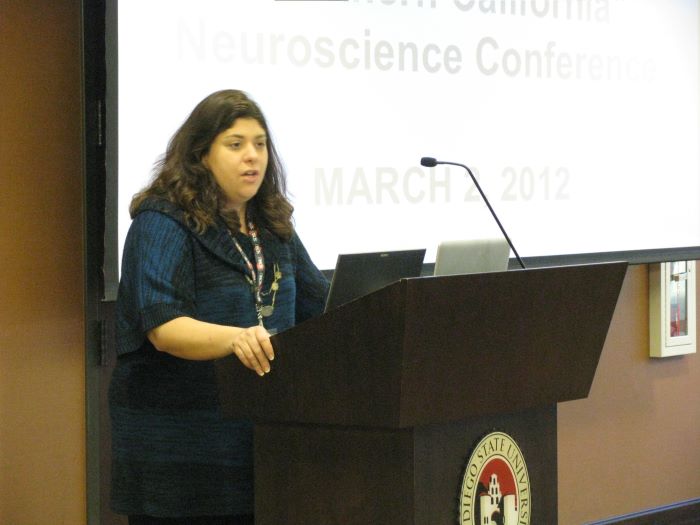 Open the image full screen.
Open the image full screen.
Two new faculty searches were launched in 2013. They expanded discipline expertise. The new faculty members provided additional breadth and depth in research and teaching expertise in the undergraduate, graduate, and doctoral programs, new opportunities for the on-campus clinic, and expanded relations with the San Diego community. The first position was for a speech scientist with expertise in voice, cleft palate, or fluency disorders. The second position was for an individual with expertise in evidence-based treatment research with a focus on child and/or adult populations. This second position was related to the newly approved SDSU Clinical and Cognitive Neuroscience (CCN) area of excellence. The CCN was one of only six awarded across the university to foster interdisciplinary collaborative research. The SDSU CCN program builds upon the strengths in human behavioral neuroscience and clinical neuropsychology at SDSU. The core faculty for CCN included Drs. Emmorey, Love, and Shapiro from SLHS, and Drs. Mattson, Müller, and Riley from Psychology. To this end, the CCN program was awarded four new faculty positions (two for each of the next two years), including: human neurogenetics, clinical neuroscience with an emphasis on new technologies, brain disorders and plasticity, and evidence-based treatment. In 2014-15, a search was undertaken for a faculty member with research experience in brain disorders and plasticity. With current faculty and new hires, interdisciplinary research and multidisciplinary clinical training opportunities increased.
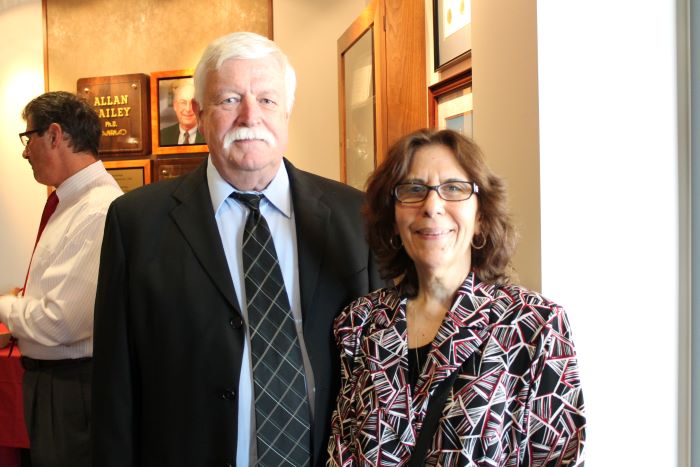 Open the image full screen.
Open the image full screen.
2014-2015
2015 marked 90 years from the time Sibyl Eliza Jones began teaching speech at San Diego State College in 1925. An amazing ascending line is traced over the 90 year period. In the sunrise years of the 20th century, speech and drama expanded to early work with speech and language disorders. When Dr. Pfaff arrived at SDSC in 1932, he, with the booming voice and commanding presence, was distinguished in the areas of speaking and drama, with emphasis on literature and performance. But, he unofficially pursued an interest in speech sound analysis, as well as habilitation and rehabilitation of speech disorders. The field of what was referred to as speech correction developed alongside traditional communication studies.
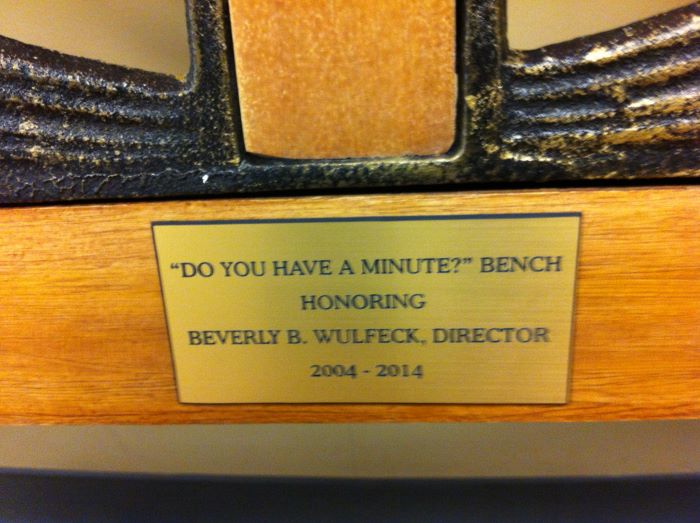 Open the image full screen.
Open the image full screen.
In the same month of 2014, Dr. Vera Gutierrez-Clellan retired after decades of teaching and research devoted to the subject of acquisition of language in bilingual children with typical and impaired development. Both the National Institute of Health and the U.S. Department of Education funded her work. Dr. Gutierrez-Clellan was a powerhouse in the classroom and in clinical research settings. She served on countless peer review panels for ASHA, NIH-NIDCD and the U.S Department of education.

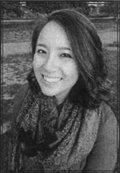
Yee studied abroad in Argentina. Her senior portfolio was “Reflecting on Honors Competencies as a Capstone Experience.”
The May 16, 2015 San Diego U-T published a delightful article and photo about graduation ceremonies at Miramar College gymnasium and the SDSU College of Health and Human Services in Viejas Arena. Titled, “SDSU, Miramar kick off graduation,” the article led with an account of the CHHS ceremony. Chukuka Enwemeka, SDSU provost and senior vice-president was the commencement speaker. The spirit of the CHHS and schools within the college was heard in the comments of Dean Marilyn Newhoff, former SLHS faculty member, a Speech-Language Pathologist in her heart and a strong guiding force on campus. She told the graduating students “You have accomplished much. You are members of the Aztec family.” Next, her instructions were those of the old fashion school teacher and the gentle humorist when she said “Please remain for the entire ceremony… and please stop bouncing that beach ball.” Wonderful. Science and humanity. Admonishment and good natured fellowship. The SLHS school is a discipline, but always mindful that it serves people. For all the seriousness of its subject matter, it possesses a sense of humor.
The school’s Dr. Jessica Barlow continued as the highly successful Sage Project Director in 2015, this time working with the city of Santee. The 2014-15 Sage Project had previously focused on National City and accomplished much. Working with SDSU students to modernize, improve and partner with National City, the program was deemed a success by SDSU President and National City Mayor Ron Morrison. Moving on to Santee is the focus in 2015-16. Sage Project Ideas and civic planning involve thousands of SDSU students. All the students, from different perspectives and backgrounds, work together. Interdisciplinary projects from schools and colleges across the campus foster collaboration in many areas including speech, language, & Hearing Sciences.
The numbers of degrees awarded in spring, 2015 were 7,542 Bachelor degrees, 2,034 Master’s degrees and 171 Doctoral degrees.18
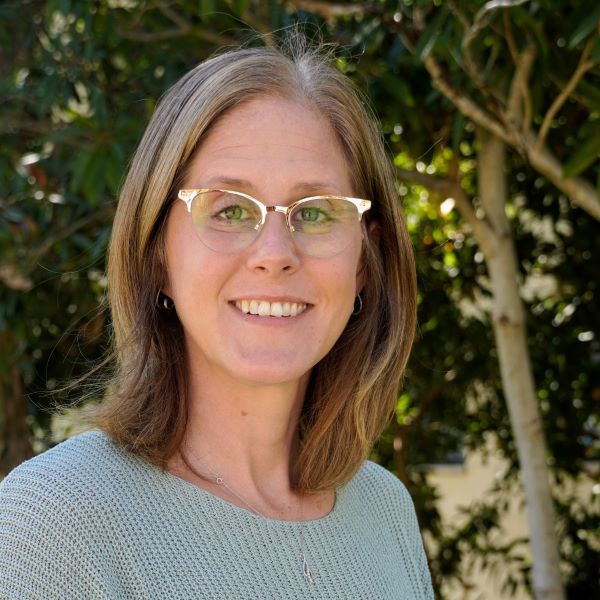
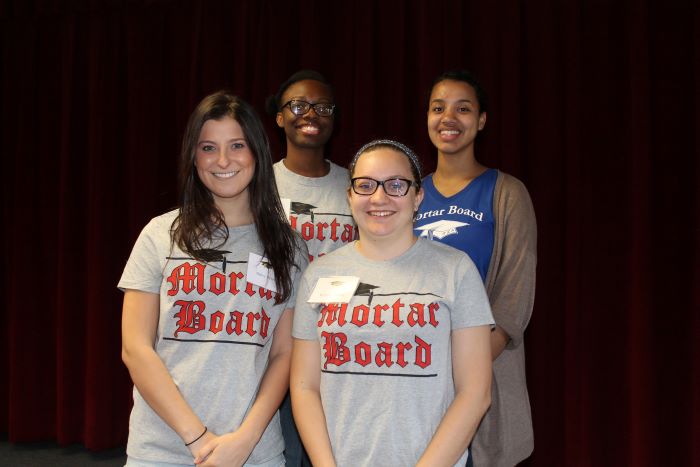 Open the image full screen.
Open the image full screen.
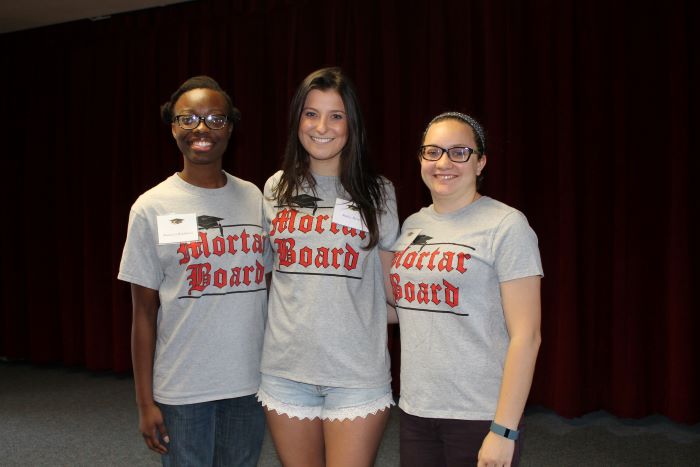 Open the image full screen.
Open the image full screen.
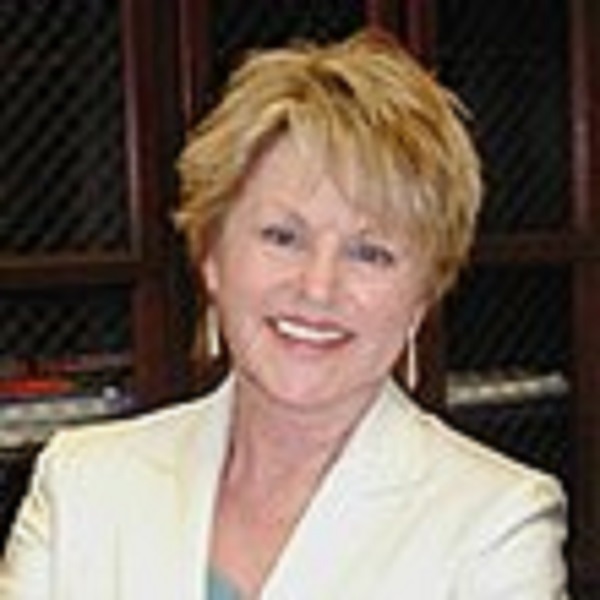
2016
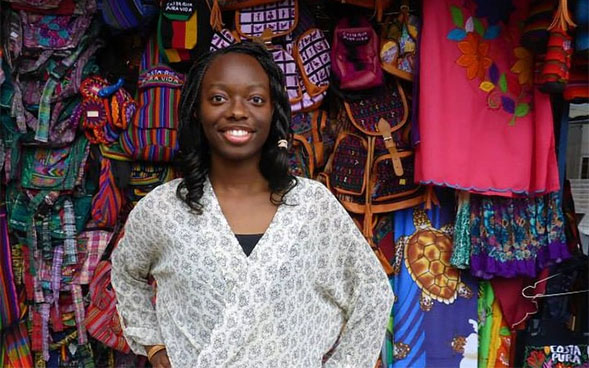
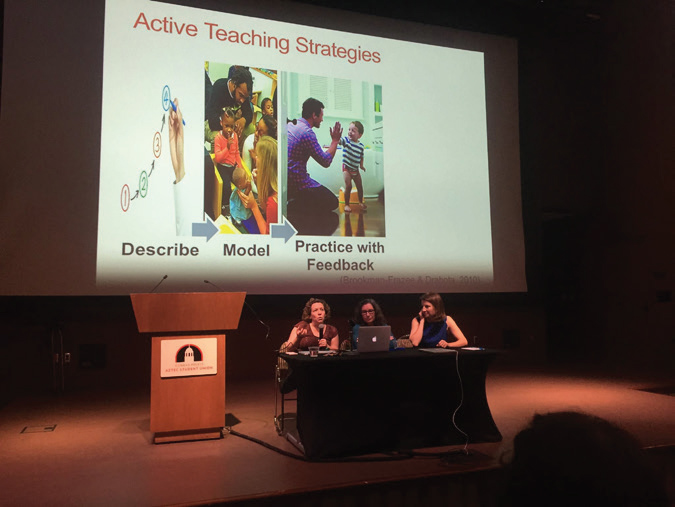
It was announced in June of 2016 that in the fall, two basic courses, Hearing Science and Anatomy and Physiology of Speech, would be offered online for academic credit. This was in response to requests from students and acknowledgment of available information delivery systems. The School of Speech, Language and Hearing Sciences strengthened a relationship with the College of Extended Studies and collaborated to create a new online Speech-Language Pathology Essentials program. This was a major step forward in training future Speech-Language Pathologists. “With courses based on cutting-edge research and best practice in the field, we’re excited about our new online program in Speech-Language Essentials, which will help students get started on their career path,” said Dr. Jessica Barlow.
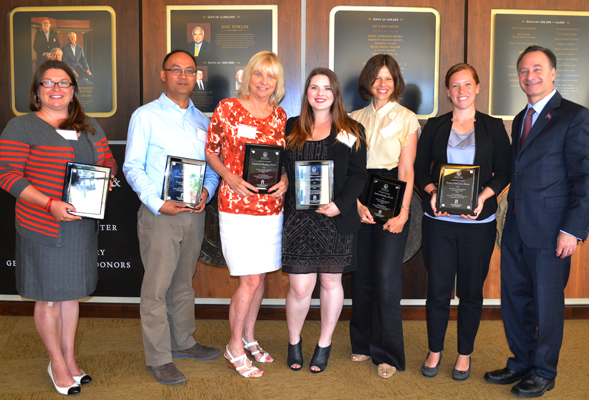
The Sage Project and Dr. Barlow’s directorship were first described in the 2013 section of this History Project when she was designated the head of the SDSU Engagement for Sustainable Cities Program, also referred to as the Sage Project. It was envisioned as a partnership between SDSU and a city or government agency in San Diego County for a school year. The founding idea was to involve faculty, students, and alumni in pursuing the public good. National City was chosen as the 2013 outreach site. As part of a team, Dr. Torre led his Audiology Doctoral students and some undergraduates in the hearing science class in field work to help identify areas critical for intervention to mitigate noise from maritime activities. In the 2015 History Project section, it was noted that the Sage Project in National City, which continued during 2014-15, was so successful that the Project moved to the city of Santee. Thousands of SDSU students have participated in the Sage Project, all with different perspectives since they come from myriad backgrounds and disciplines. This collaboration across disciplines, including Speech, Language, and Hearing, results in rich real-life educational experiences.
Now, students, faculty, and alumni move with the Sage Project to Lemon Grove where they will use all the tools in their tool kits to analyze, devise delivery systems and partner in as many ways as possible with Lemon Grove, a place with a vibrant cultural history.
Dr. Lew Shapiro was toasted by faculty and staff at a retirement party at Petco Park in June, 2016. At the jovial gathering, he reminisced about the twenty productive years he spent at SDSU, with a special shout out for his many students over two decades on campus. He thanked the students “…who kept me on my toes, forced me to think and re-think, and who made this journey so enjoyable. After all and let’s not forget this, it’s all about our students!” As a Professor and Director, he expressed his gratitude to the university, college, and school for their confidence in his skills and academic mission. As Dr. Shapiro retired on a high note, the college turned another page in its remarkable history. July, 2016 started a new academic cycle. The future was already present.
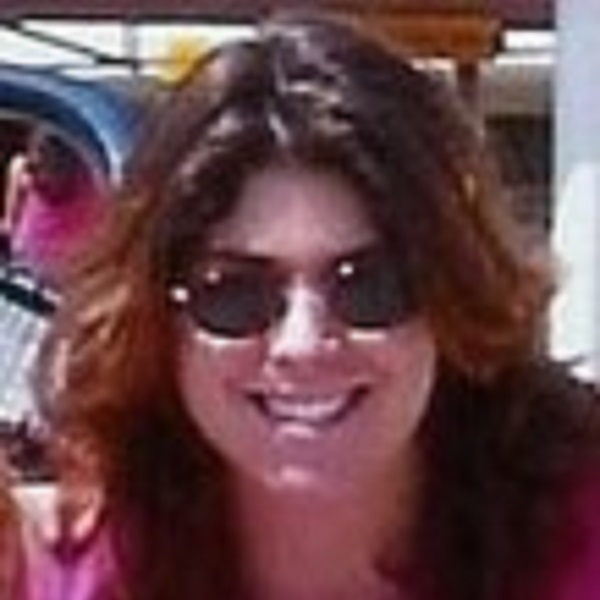
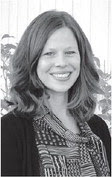
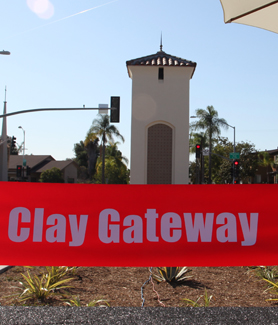
On December 12, 2016, a front page San Diego Union-Tribune article21 about health care plans for the nation’s Navy by the Navy’s top doctor, Vice Admiral C. Forrest Faison III, a board-certified pediatrician, caught the eye of SLHS faculty, alumni, and clinic staff, as well as those at San Diego Naval Medical Center. A photo accompanied the piece. Some who saw it thought “We know him!” That is because in 2012, Vice Admiral Faison approved and attended, with great enthusiasm, the 40th anniversary celebration of the Naval Hospital Speech & Hearing Clinic. The creation of that clinic in 1971 was a dream goal of Dr. Sue Earnest, Jo Cormier San Diego State University and its speech clinic, and the Wives of Naval Reserve Officers Club. Making the clinic a reality was an enormous undertaking, requiring official approval by San Diego State as well as Washington D.C. Naval leaders. Darlene Gould was the first clinical director/supervisor and the clinic was staffed with graduate clinicians from SDSU who were supervised by faculty in specialized areas. Dr. Edmund Thile, Dr. Alan Nichols, and Dr. Elizabeth Allen and others traveled from SDSU each week to supervise specific clinic populations. For Dr. Thile, the areas were stuttering and articulation; for Dr. Nichols, focus was voice and laryngectomy; for Dr. Allen, targeted diagnoses were cleft palate and orofacial anomalies and articulation. Additional clinical supervisors shared their skills with graduate students in training. The clinic operated under the auspices of the Naval Medical Center department of otolaryngology. It became so successful, the Navy eventually fully incorporated it into its medical program and by the 2012 anniversary, it was a very large department with U.S. government staff. Of course, when it officially began in 1972 (unofficially in 1971), all clerical staff was volunteer and supervisors were paid by SDSU, with the exception of Gould who was paid by the Officers Wives Club, itself a volunteer organization. Physical space for the clinic at the hospital was provided by the U. S. Navy. At that time, the clinic served active duty, retired and dependent Navy families. Clients were treated free of charge. The wives Club held fund raisers to purchase equipment, testing and therapy materials and to pay Gould’s part time salary. Not so 40 years later. In 2012, the Naval Hospital Speech & Hearing and ENT staff joined Dr. Faison at the ebullient 40 year anniversary celebration, with a highly decorated cake. Dr. Wulfek, Director of SLHS at State, attended and some individuals who had served as volunteers in the 1970s were there also. Plaques of commendation were presented by Vice Admiral Faison and he delivered a splendid talk about the clinic and its impressive history. SDSU graduate student externships at the Naval Speech & Hearing Clinic were still being filled in 2016 and the remarkable collaboration between San Diego Medical Center and SDSU’s school of SLHS continued. In the news article, the Vice Admiral advocated greater use of technology in the delivery of health care services. He urged high tech “virtual medicine” be connected with patients, as well as with the 63,000 physicians, nurses, corpsmen, dentists, government workers and those with contracts. For certain, Dr. Faison also knows about the San Diego Naval Medical Center Speech & Hearing Clinic and SDSU’s strong role in it. That is for sure.
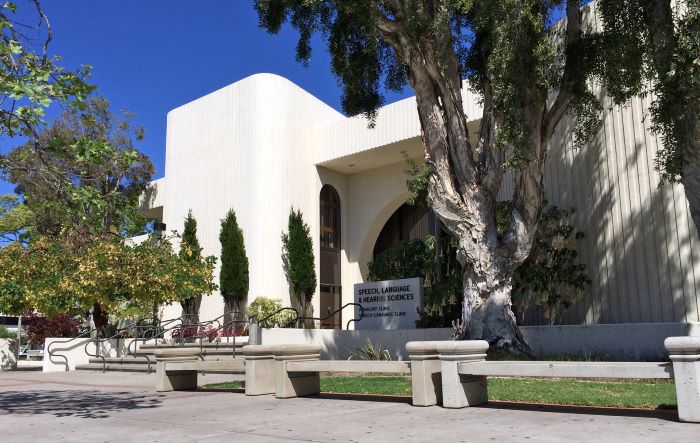 Open the image full screen.
Open the image full screen.

Dr. Larry Verity accepted the position of Interim Dean of the College of Health & Human Services on July 1, 2016. He brought considerable experience to the administrative role, having previously served as Associate Dean of the college.
2017
On January 26, 2017, Dr. Lilly Cheng, Professor Emerita of SSLHS and Executive Director of the SDSU Chinese Studies Institute, spoke to the downtown Rotary Club in recognition of the Chinese New Year. Her presentation focused on ways to understand differences between the east and the west. Her audience was a large one.
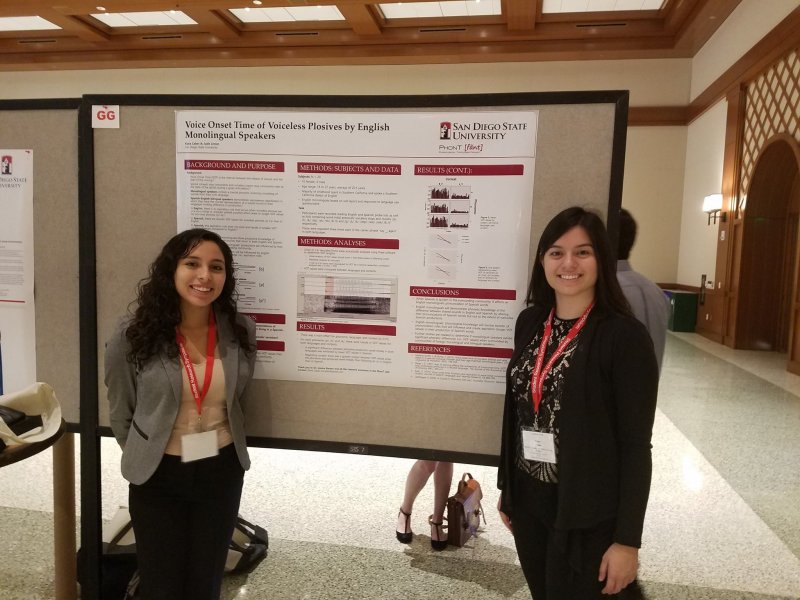
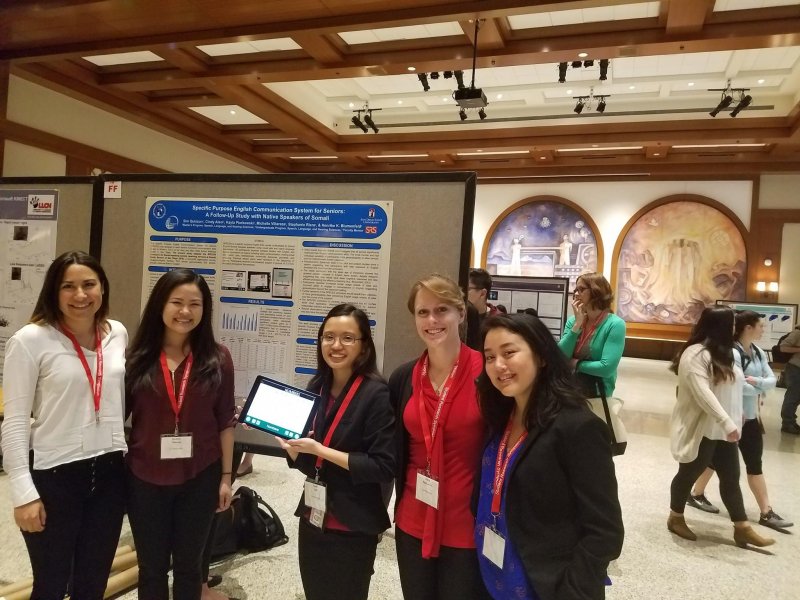
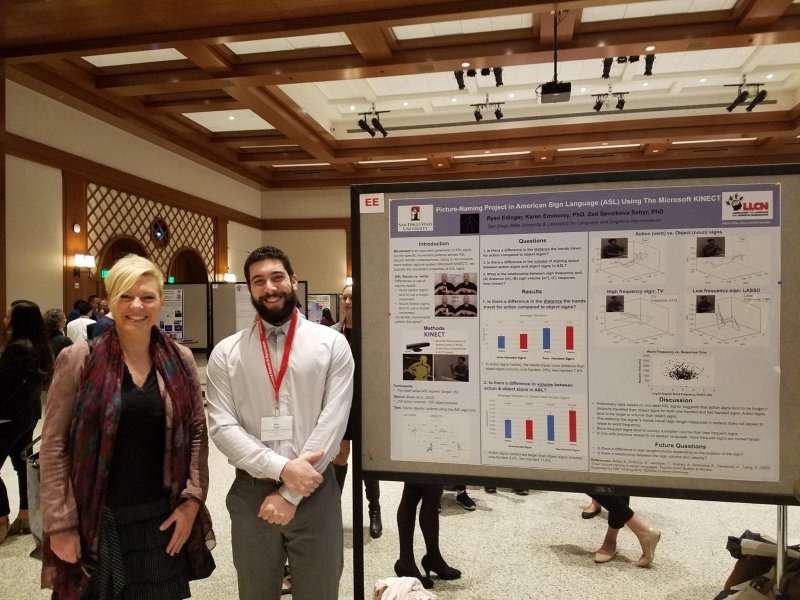
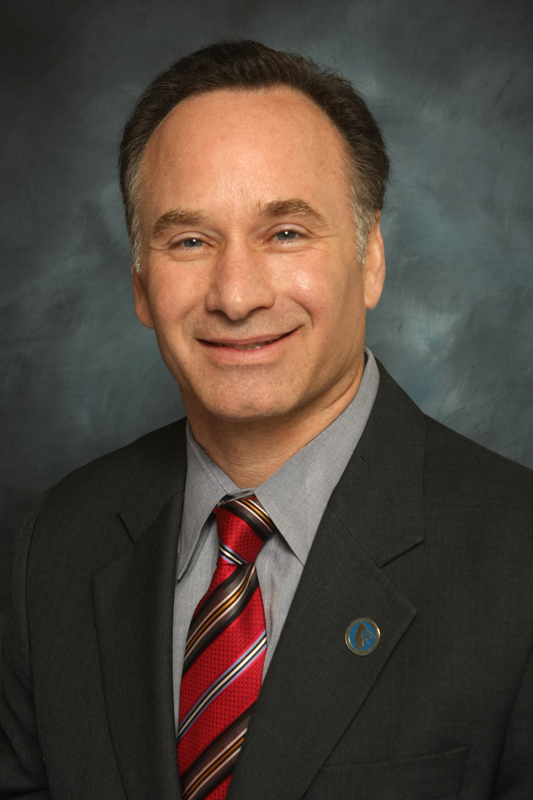
For the third year, San Diego and SDSU communities attended Speech-Language Awareness and Information Day (SAID) which was hosted by SLHS on May 1. The SDSU and larger San Diego community connection endures and has been a continual thread through the entire history of the school, particularly of the Speech, Language, Hearing clinic to which San Diegans have turned for diagnosis and treatment since the 1950s. At 2015/2016/2017 SAID, the public learned about new research in the field of communications and also explored current resources available for speech and language challenges at the Community Resource Fair—so important and meaningful to families. At the Fair, there are opportunities to ask questions and interact with resource professionals. Everyone benefits.
Dr. Tracy Love was appointed permanent Director of the SLHS in late July, after serving as Interim Director of the school for more than a year. Dean Larry Verity made the announcement. Well respected, Dr. Love had very strong backing by faculty and administration. Additionally, she brought sensitivity and awareness to the position, ensuring her availability to students and faculty in response to their requests for advice and consultation. The Directorship is a big responsibility, and Dr. Love had an opportunity to demonstrate her readiness for the role before being given the permanent assignment.
ASHA spotted leadership potential in two SLHS M.A. students. Carlos Arias and Diane Guerrero were selected for ASHA’s Minority Student Leadership Program because of their interest in and past experience with culturally-and linguistically-diverse populations. As part of the training program, ASHA invited Carlos and Diane to the national convention in Los Angeles in November, 2017, with goals of strengthening their leadership skills and providing opportunities to meet many professionals in the field.
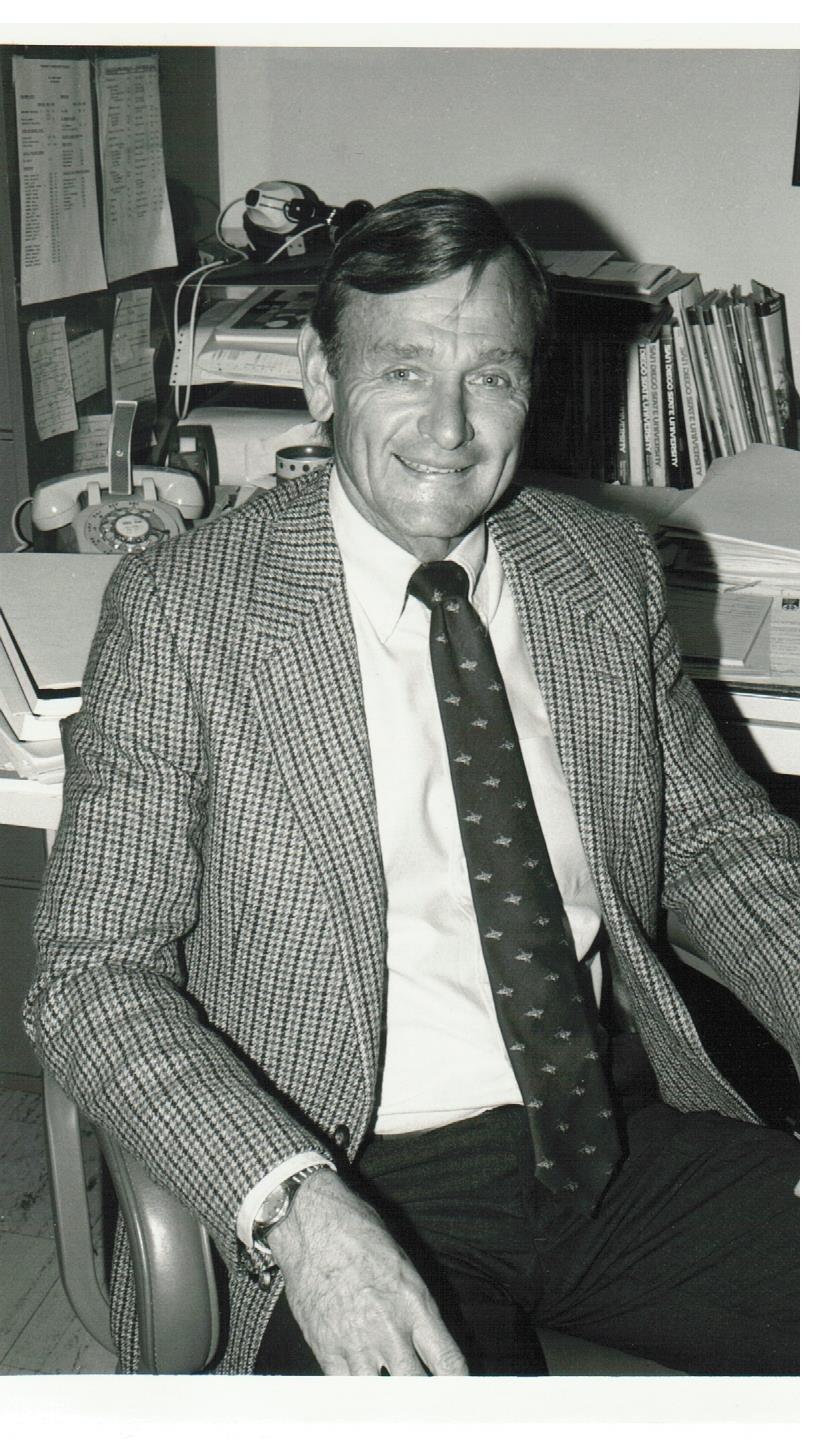
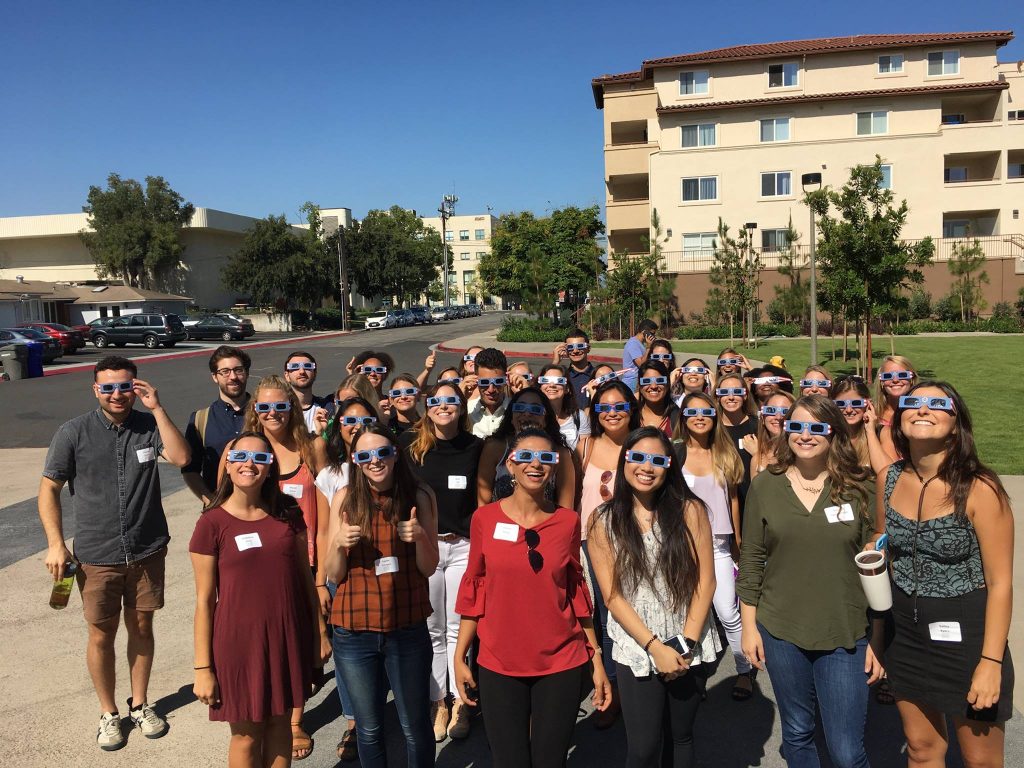
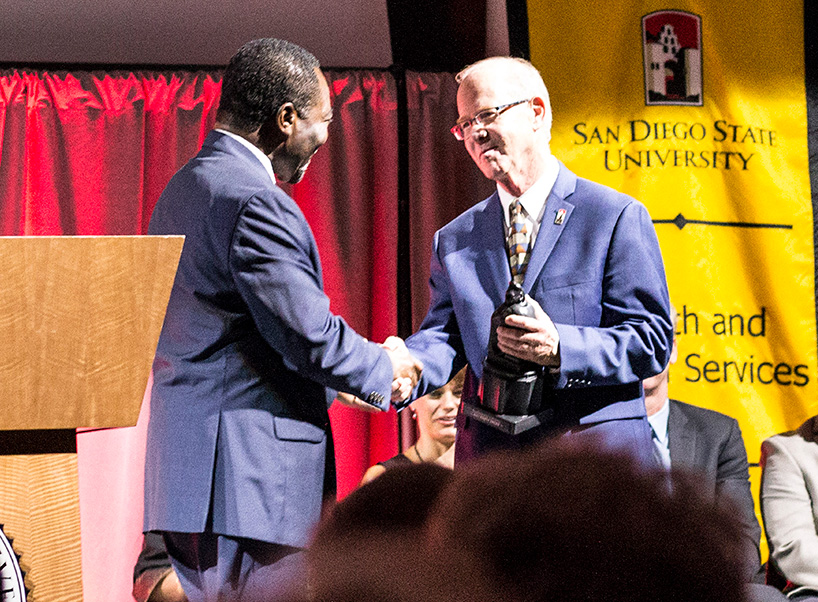
SDSU launched what it called Celebrating 120 Years in 120 Days on August 25 when the traditional “Hello Walk” gathering was held at Templo del Sol. At “Hello Walk” students experience their first official evening as Aztecs. Every year, the event is marked with enthusiasm and camaraderie and 2017 was no exception. It kicked off a celebration of the remarkable dozen decades of growth and attainment. Those decades permanently connected San Diego State with the community, establishing very strong ties. The 120 day period was designed to appreciate the steep climb from the Normal School beginnings to the important university status SDSU ultimately achieved. Its first graduating class was comprised of 23 women and three men. By 2017, graduating classes numbered many thousands. The remarkable SDSU Presidents’ contributions and the many campus “Firsts” were part of a great SDSU story.
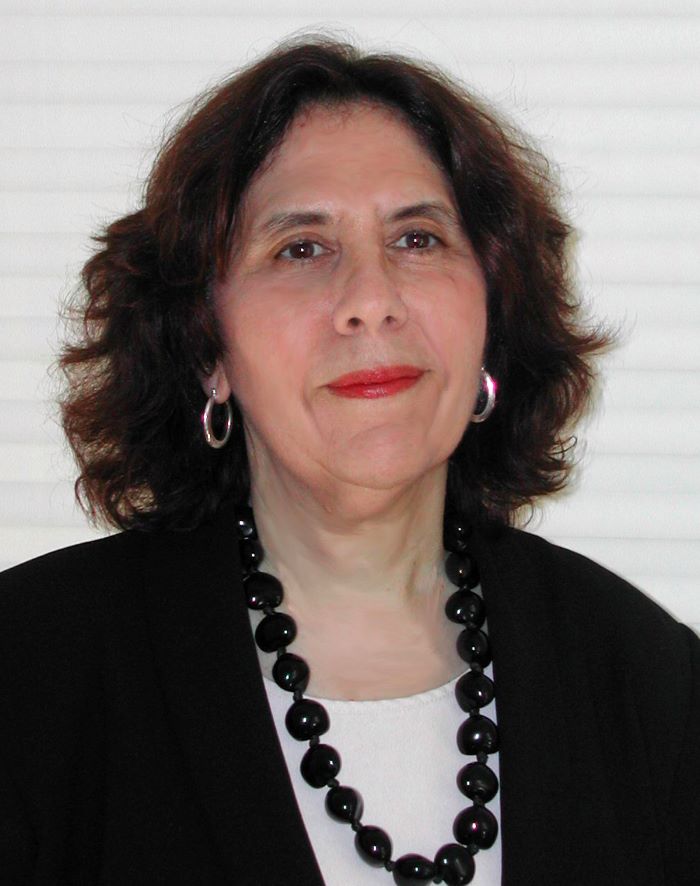 Open the image full screen.
Open the image full screen.
Dr. Wulfeck first taught as a lecturer in the 1970s, eventually becoming Director of San Diego State’s Clinical Training Center. She excelled in that role but wanted to learn more so she completed a Ph.D at UCSD before being recruited back to SDSU, this time as tenured faculty. She was the founding Program Director of the SDSU/UCSD joint doctoral program in Language and Communicative Disorders from 1996 until 2014, the year in which she retired from SDSU, becoming Professor Emeritus. Her work was internationally recognized. Beverly’s research was supported by the National Institutes of Health for a quarter of a century. She combined that amazing work ethic with her duties as Director of SLHS, a position she held from 2004 until 2014. It would be difficult to imagine a more accessible School Director than Dr. Wulfeck. She answered her own phone, encouraged faculty and students in their endeavors, and combined a scientific mind with a creative persona. Friends and colleagues asked, “Does Beverly ever complain?” Apparently not. She was the recipient of the Outstanding Faculty Monty Award in 2008 and served as the Grand Marshall at the 2009 College commencement ceremony in Cox Arena. On the occasion of Dr. Wulfeck’s retirement, the faculty and staff presented and had installed a bench in front of the SDSU Speech, Language & Hearing Sciences building. The bench is inscribed “DO YOU HAVE A MINUTE” BENCH HONORING BEVERLY WULFECK, DIRECTOR 2004-2014.
It was announced in September that the Beverly Wulfeck Fellowship was being established by SLHS. The fellowship was designed to support graduate students and was particularly appropriate because of Dr. Wulfeck’s long history with the graduate program. She was a founding member of the SDSU/UCSD Joint Doctoral Program in Language and Communicative Disorders and her commitment to students pursuing graduate degrees was strong and unwavering. As part of that commitment, she consistently sought doctoral student funding. She was remarkably successful at finding monetary support for continued studies. It mattered to her. She definitely made a difference.
The September 18, 2017 e-newsletter of the John F. Kennedy Presidential Library and Museum in Boston, Massachusetts led with an item that called attention to San Diego State College. On the left side was a color photo of President John F. Kennedy and President Malcolm Love. The two men wore commencement robes and mortarboards. The occasion was the 1963 commencement ceremony in Aztec Bowl. To the right side of the photo was the memorable line from JFK that day “There is no greater asset to this country than an educated man or woman.” Below that quote was the attribution: President John F. Kennedy Commencement Address at San Diego State College June 6, 1963. The simple and dramatic opening to the newsletter was stunning. It was followed with pictures and text about the Library’s exhibits, events, film, and educational measures. But San Diego State College was present in the lead story. Even before it was a university, it was a site of historic significance.
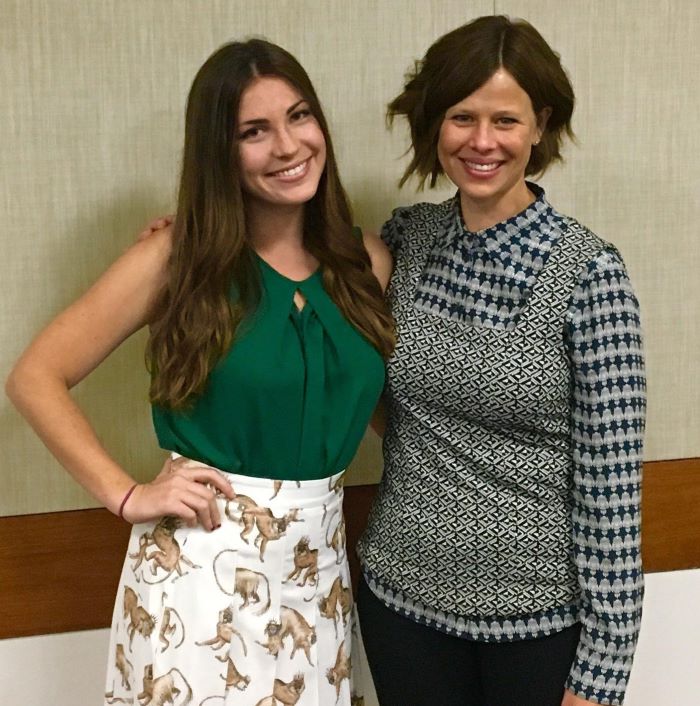 Open the image full screen.
Open the image full screen.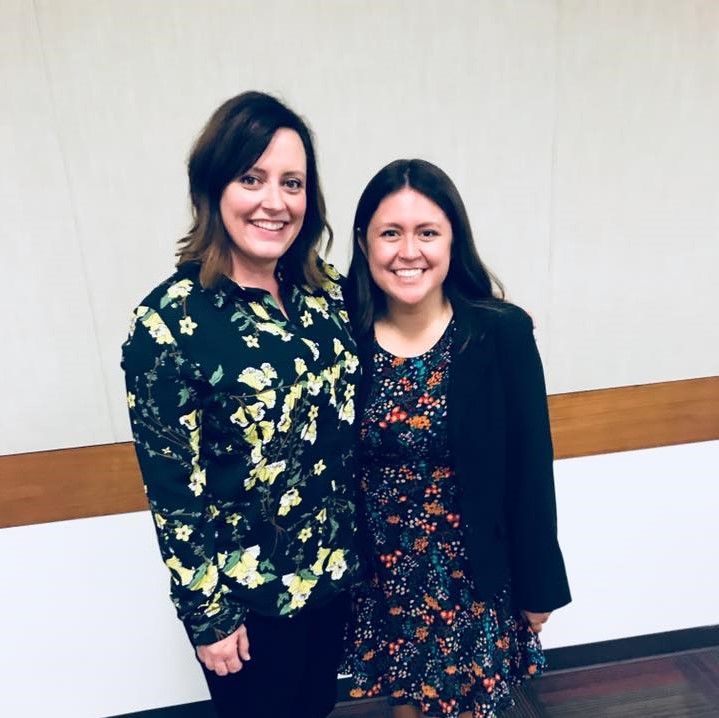
In fall of 2017, Dr. Tracy E. Love, Director of the School of Speech, Language, Hearing Sciences, announced the formation of a Speech, Language, Hearing Sciences Advisory Board. Members of the Advisory Board would meet one or two times each year to discuss issues and upcoming events, with ongoing consideration of SLHS accomplishments, direction, and future. Dr. Love invited members with varied professional backgrounds and extensive experience in respective fields to serve the School in advisory capacities.
Alumni of the SDSU SLHS school enjoyed great camaraderie at an organized event at the November 2017 ASHA convention in Los Angeles. Alumni attendance at the get together greatly exceeded expectation, a cause for celebration. Approximately 150 former SLHS students socialized with one another, reconnecting with their school and with one another. There was so much “catch up” at the gathering, portending future alumni events. Hopefully, there will be more opportunities for exchange at future conventions and conferences across the country.
2018
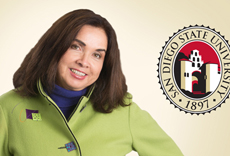
Dr. Tracy Love, Director of SLHS, formed an Advisory Board comprised of active and Emeriti faculty, clinical personnel and allied professionals. The first two meetings of the board were held in the spring semester of 2018, and, in the second meeting, recommendations for helpful actions to be taken were made by the members. Since there was a lot of territories to be covered in the sessions, abundant information regarding the various programs of SLHS was shared with the board. Lots of discussions ensued. Camaraderie prevailed.
Dr. Jeff Elman, a member of the 1980s core faculty that guided the UCSD/SDSU joint Ph.D program to reality, died in June 2018. His was a long and distinguished career in the field of cognitive sciences. The original core joint Ph.D faculty included, from UCSD, Dr. David Swinney, Dr. Elizabeth Bates, and Dr. Jeff Elman, as well as Dr. Ursula Bellugi from the Salk Institute for Biological Studies. Dr. Donna Thal and Dr. Beverly Wulfeck represented SDSU Communicative Disorders, with Dr. Lewis Shapiro joining them later. Dr. Elman earned his Bachelor’s Degree at Harvard and his Ph.D at the University of Texas. He was noted for his research regarding artificial neural networks and he specialized in cognitive sciences. Dr. Elman served as UCSD Dean of the Division of Social Sciences from 2006-2014.

Dr. Karen Emmorey is now a Fellow of the Linguistic Society of America.
In August 2018, SDSU’s ninth permanent president, Adela de la Torre, hosted the annual All-University Convocation. A large group comprised of SDSU faculty and staff attended this popular event which was staged within the Conrad Prebys Aztec Student Union. The Convocation was forward looking, offering inspirational and aspirational ideas regarding the upcoming academic year. President de la Torre emphasized the importance of discourse and dialogue. The energetic gathering closed with an outdoor luncheon in the Frank and Lee Goldberg Courtyard.
An image of Dr. Li Rong Lilly Cheng was featured in the four-page section “Our Immigrant Story” in the Sunday, September 16, 2018 issue of the San Diego Union.
The 2018-19 academic year got off to a promising start as NSSLHA (National Student Speech Language Hearing Association) greeted 200 undergraduate and graduate members and welcomed them to the SDSU chapter. The successful buddy system continued, connecting as many as 150 participants. The power of volunteering was demonstrated in the impressive service record of NSSLHA students during the fall semester, with volunteering taking place at ten different events. The range of those events was wide and included a resume workshop, a social gathering for transfer students, donation of more than 100 books in many languages to Rosa Parks Elementary School, presentation of a professional panel of Speech Language Pathologists and audiologists, mock interview practice sessions, work at the DEAFestival, and more. These are dedicated people.
In fall, 2018, President Adela de la Torre hosted a lovely reception at University House to welcome Dr. Steven Hooker as the newest Dean of the College of Health & Human Services. The event added a gracious element to SDSU academic life and was intended to strengthen ties between those in the university and with individuals from associated institutions. Dr. Hooker replaced the much-admired Dr. Larry Verity, Interim Dean of the college.
The big news of the year was the passage of Proposition G, the SDSU West initiative, which authorized SDSU to begin negotiations with the city of San Diego for the purchase of the land on which the current stadium and the surrounding acreage sat. On November 6, voters chose SDSU over Soccer City to redevelop that valuable land. Upon acquisition of the land, the university planned construction of research facilities, an innovation district, housing, a river park, and a smaller multi-use stadium. OP-ED cartoonists had fun imagining their versions of SDSU saying “Now, What?” following the successful election. There was a bit of truth to the gentle humor because the challenge was enormous. But the opportunity for the creation of a visionary legacy was a driving force. The legacy project would demand great energy and enthusiasm, as well as really smart minds. A little scary maybe, but thrilling in its boldness.
2019
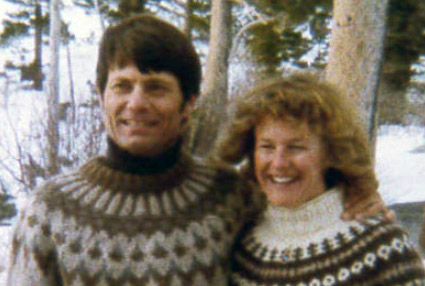
Dick and his wife, Dr. Kathi Hoffer, were a popular couple, outdoor enthusiasts brimming with health and optimism. Kathi had a connection to SDSU also, serving as a staff member and a lecturer while here. They participated in many sports activities while in San Diego, expanding those adventures once Dick retired. In tune with nature, he loved rivers, oceans, and mountains, so he backpacked in the Sierras, cycled through Europe, hiked, planted trees, and worked with horses, continuing to ride horses even after a diagnosis of Parkinson’s Disease in 2009. Dick was a soft-spoken man with a wry sense of humor. People listened to him. Quietly confident, he led his life with assurance and grace.
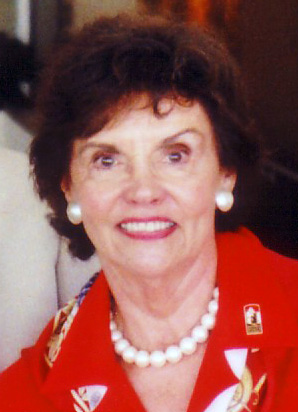
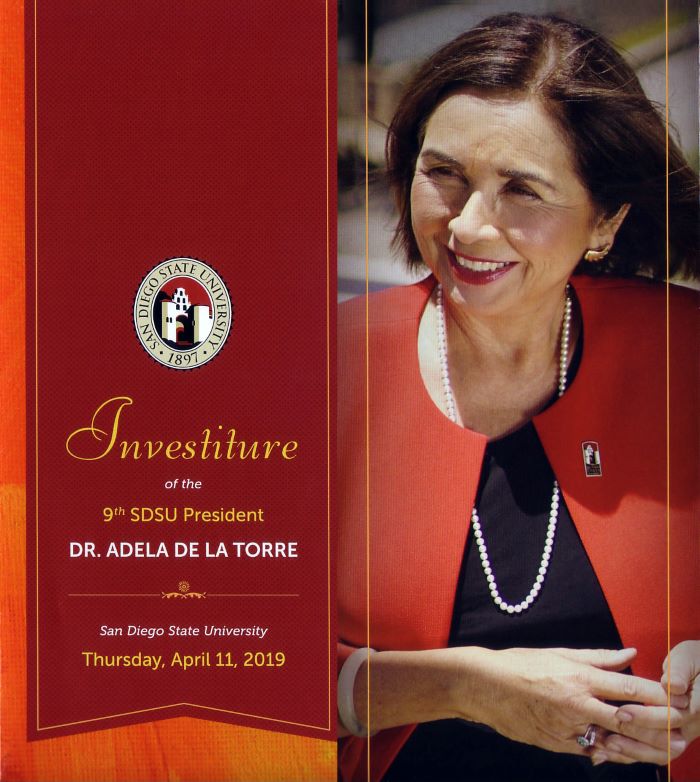 Open the image full screen.
Open the image full screen.
“My vision is that working together SDSU will graduate the future global citizens, ethical innovators, and compassionate leaders who will impact the San Diego region and the world.” SDSU President Adela De La Torre, Ph.D.
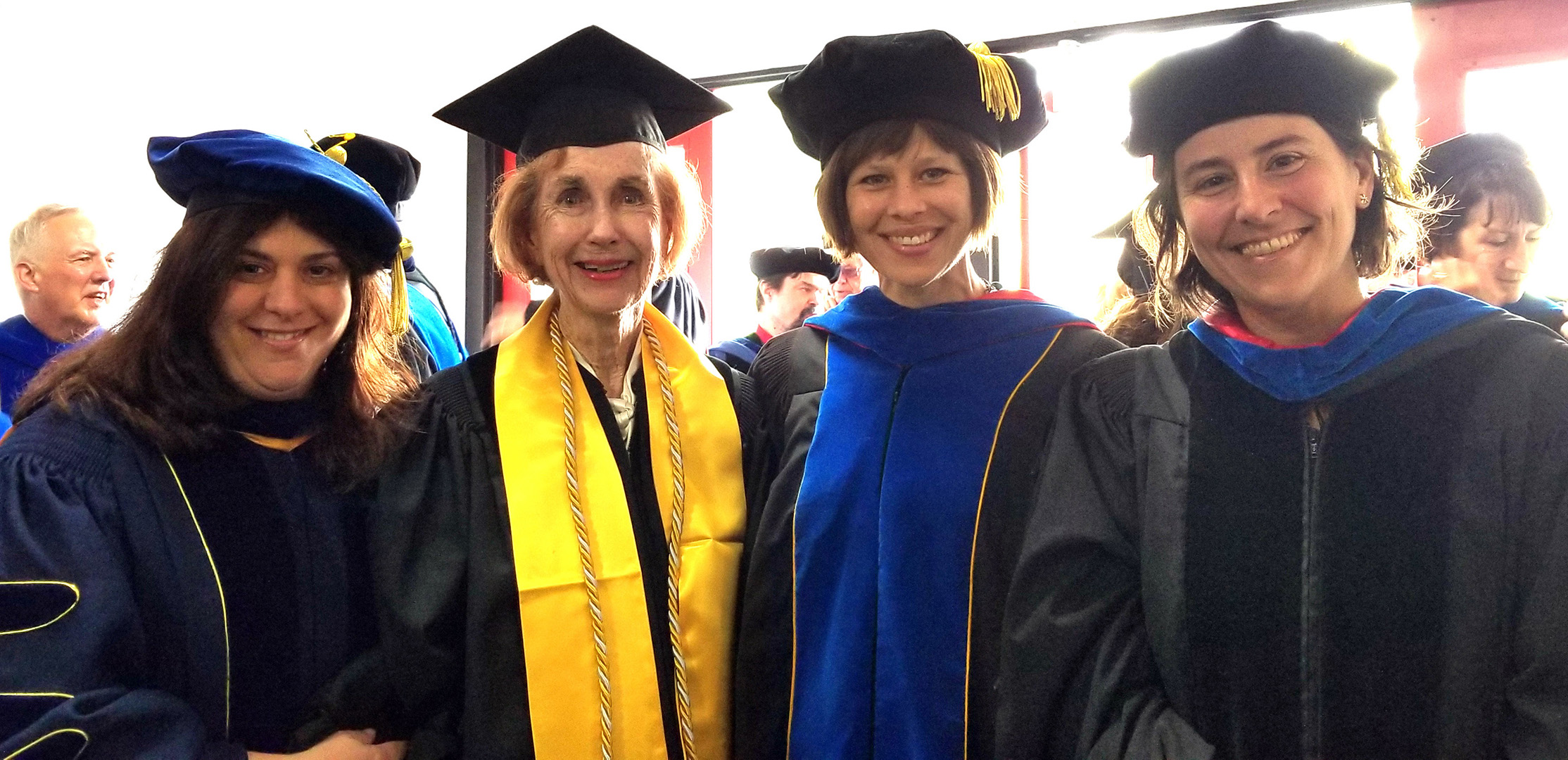
It was announced in April 2019 that Dr. Tracy Love-Geffen would receive the prestigious Faculty Association Award for her contributions as 2019-2020 SDSU Outstanding Faculty in the College of Health & Human Services. The award was scheduled to be given at the annual All-University Convocation on August 22, 2019. Dr. Love joins a group of accomplished academics who have been so honored over the years. The first year this award was bestowed was 1984.
Collaboration is important and that concept was highlighted in the July 2019 SDSU NewsCenter story by Jeff Ristine about a hearing aid loaner program that made enormous differences in the lives of children. The successful loaner program originated with the Assistance League of Greater San Diego. Members of that philanthropic group noticed there was definitely a need. They found that, frequently, children were without aids while their own was being repaired, or families simply couldn’t afford to purchase pricey hearing aids. So the SDSU Audiology Clinic stepped up to offer diagnosis and fittings, and the San Diego Unified School District became involved as well. Research and observation clearly show improved hearing increases learning. At the time the article was published online, 40 long-term loans had been made to families and 34 more hearing aids were made available on short-term bases. Several children were cited as examples of happy learners with hearing aids.
While collaboration between disciplines is helpful, work with communities is also crucial and that concept was highlighted in the July 2019 SDSU NewsCenter story by Jeff Ristine about a hearing aid loaner program that made enormous differences in the lives of children. The successful loaner program originated with the Assistance League of Greater San Diego. Members of that philanthropic group noticed there was definitely a need. They found that, frequently, children were without aids while their own was being repaired, or families simply couldn’t afford to purchase pricey hearing aids. So the SDSU Audiology Clinic stepped up to offer diagnosis and fittings, and the San Diego Unified School District became involved as well. Research and observation clearly show improved hearing increases learning. At the time the article was published online, 40 long-term loans had been made to families and 34 more hearing aids were made available on short-term bases. Several children were cited as examples of happy learners with hearing aids. This was a terrific story about a noteworthy clinic with a long history.
SDSU Chicano and Chicana Studies are celebrating its 50th anniversary during the 2019-2020 academic year. Founded in 1969, it was one of the first departments of its kind in the nation. SDSU had a long-term vision when it took this leap forward in 1969. Collaboration between departments and schools on campus became increasingly important. SLHS has encouraged bilingualism, indeed multilingualism among its students, noting the need for those who train to be speech-language pathologists to understand and speak other languages. Increasingly, clients are Latino/Chicano.
Chancellor’s Award:
Sonja Pruitt-Lord was a recipient of a prestigious CSU Faculty Innovation Award. She was one of only two faculty members in the CSU system to receive this honor in 2019. Not only did she received a monetary award, but so did her academic school. The two honorees were formally celebrated in mid-October, 2019 in Sacramento. About these two distinguished faculty members, CSU Chancellor Timothy P. White had this to say: “These outstanding faculty consistently engage students with innovative practices and foster stimulating and equitable learning environments that support these students on their path to graduation. Their commitment to deepen and enrich learning by putting students at the center of all they do is fundamental to the mission of the CSU, and is helping to transform higher education nationwide.”
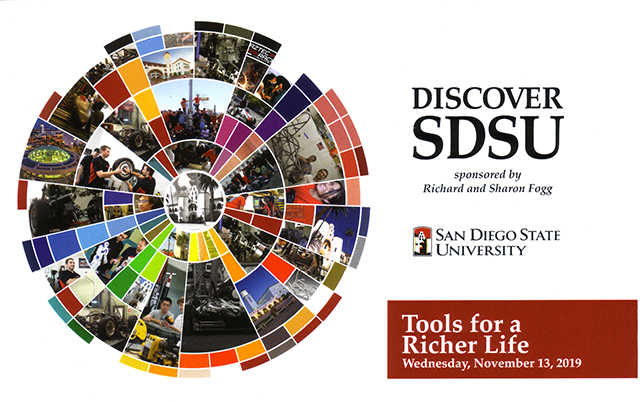
With so much innovative work going on at SDSU, it was deemed essential to get the word out to the public. Therefore, Discover SDSU was designed with that in mind. Since communication is always an ongoing challenge, there was a sure fit with the School of Speech, language, and Hearing Sciences on many levels, since it specializes in all kinds of communication. It definitely knows a thing or two.
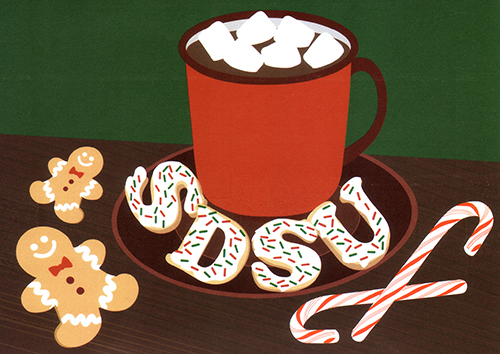
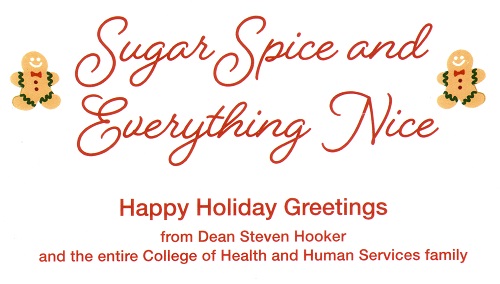
2020
While the beginning of the spring 2020 semester went well, there was an abrupt switch mid-semester from traditional classrooms and clinical settings approach instruction by digital means. The change was due to the rapid increase of COVID-19, a new type of coronavirus. This was a public health threat of pandemic proportions. Methods of treatment were largely unknown, though respirators and ventilators were relied upon to offer relief to the most seriously ill patients in hospitals. Unfortunately, at that time, most ventilator patients didn’t recover. It was a time of real fear, hence the ending of on-campus instruction and the moving of most students off-campus. University life, with a few exceptions, was conducted from within the confines of private homes. Working remotely became the norm.
For faculty sophisticated in technology, it was an easier transition to digital instruction. For many other instructors, however, it was frightening. A rapid learning period was undertaken. Adapting to new programs, making all materials available online, designing new kinds of tests, and finding successful ways of offering discussion and real-life experiences online were daunting. Zoom and other interactive online programs provided opportunities for conversations about learning material and about clients, but no one preferred it the new way.
It was announced that the fall, 2020 semester would continue to be conducted online, with only a very few exceptions. Likewise, some research work would continue on campus but would be limited. The good news was the instructors were much better prepared since the learning systems and materials were greatly enhanced.
In the midst of all this, we are reminded that 95 years ago a speech teacher by the name of Sybil Eliza Jones arrived at the San Diego Teachers College, soon to be known as San Diego State College. Just three years before, it had been known as the Normal School. What a long road has been traveled.
2021
Creative ways were found to connect with supporters and other faculty during the COVID-19 pandemic. During spring, 2021, the College of Health & Human Services presented virtual talks by faculty of various Schools within its college. Dean of the College of Health and Human Services, Dr. Steven Hooker, welcomed guests to the conversations. On April 23, the focus was on communication and it was the turn of the School of Speech, Language, Hearing Sciences. A one-hour session was led by Carrie Goodwiler, Director of the SDSU Speech-Language Clinic, and by Jo Ann Silkes, Ph.D., Assistant professor of Speech, Language, Hearing Sciences. Goodwiler set the scene by providing a description of speech-language services available at the clinic, with clients ranging in age from young children to elders. The many diagnoses indicate the wide spectrum of communicative needs of those seeking treatment.
The second presentation was made by Dr. Silkes. She titled her talk “Language Limited: Forging Pathways Forward Following Stroke.” Dr. Silkes described a client diagnosed with aphasia—a disorder of language symbolization—and played a recording of a particular dysphasic attempting to verbalize her thoughts. Research results regarding effective ways to foster improved verbalization were shared with viewers.
The final portion of the session, led by Dr. Tracy Love, Director of SLHS, was reserved for questions from the audience, and the inquiries were excellent. The questions posed were thoughtful and revealed some sophistication regarding the subject. This portion concluded the conversation.
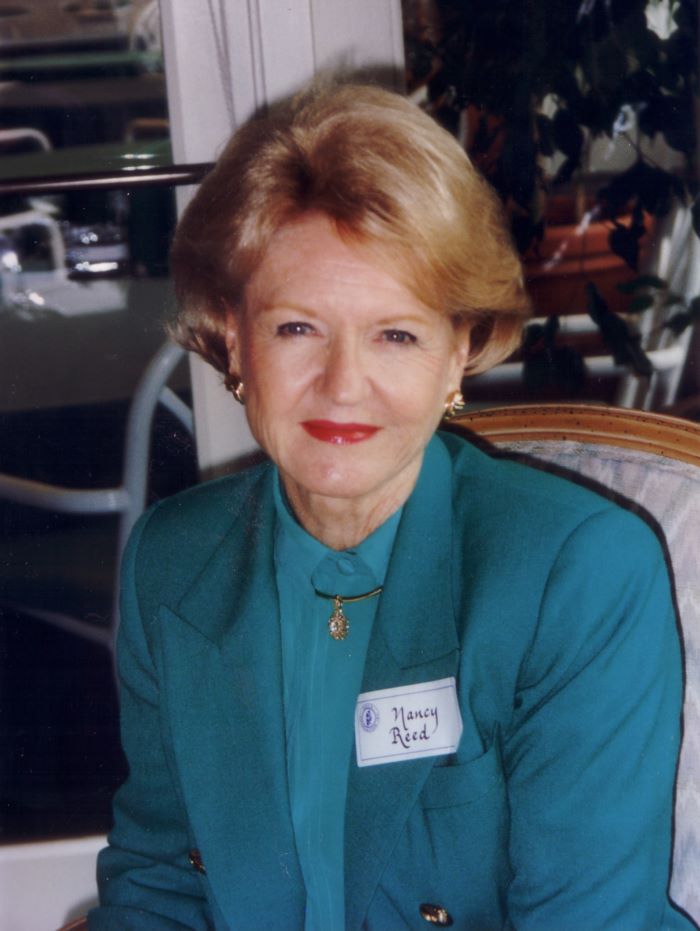 Open the image full screen.
Open the image full screen.
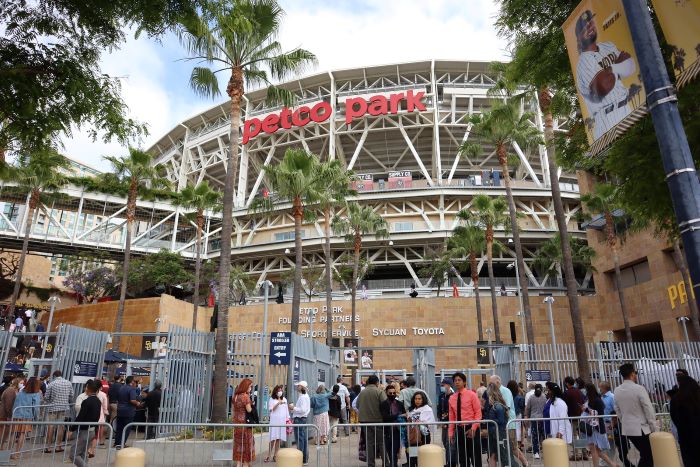 Open the image full screen.
Open the image full screen.
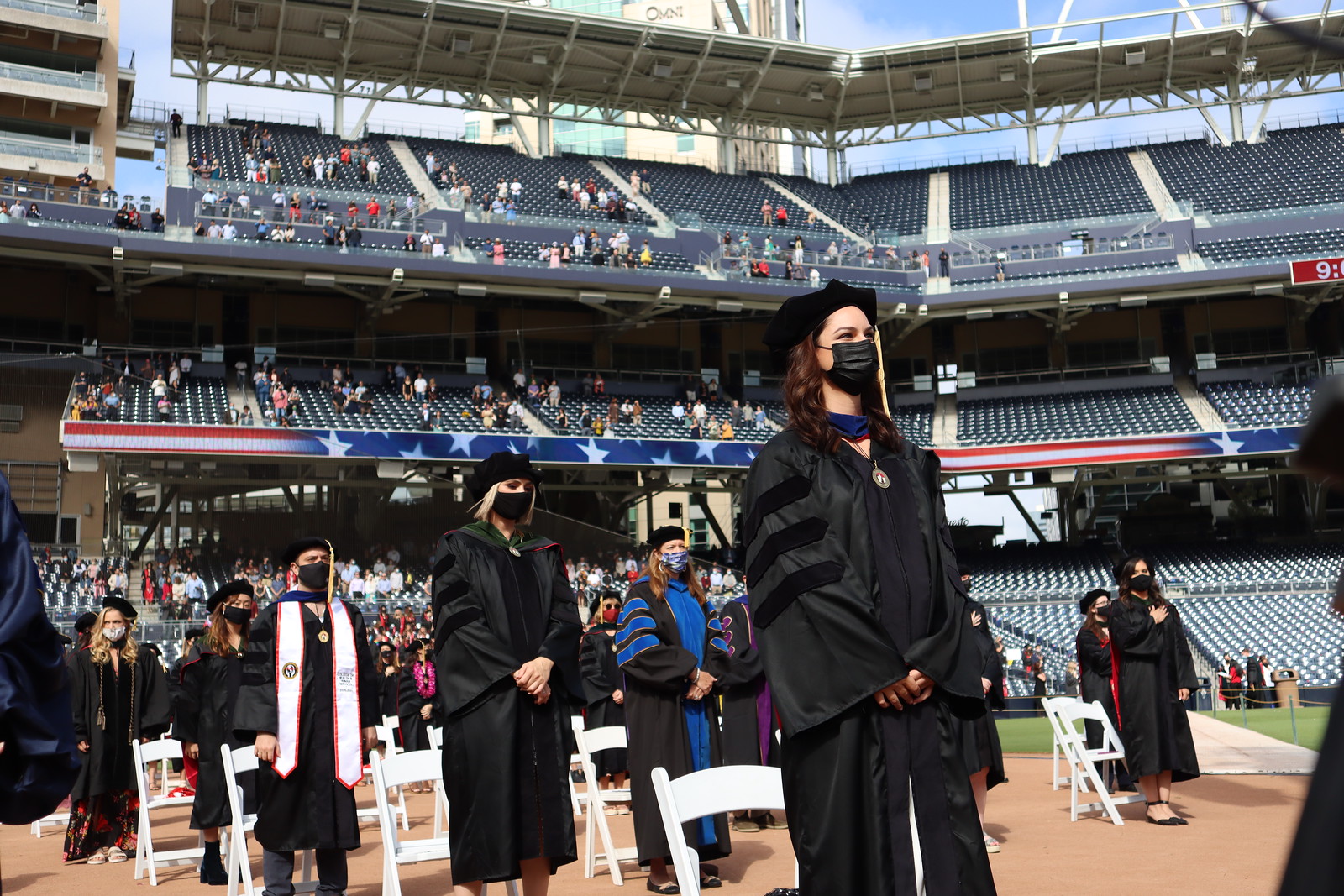
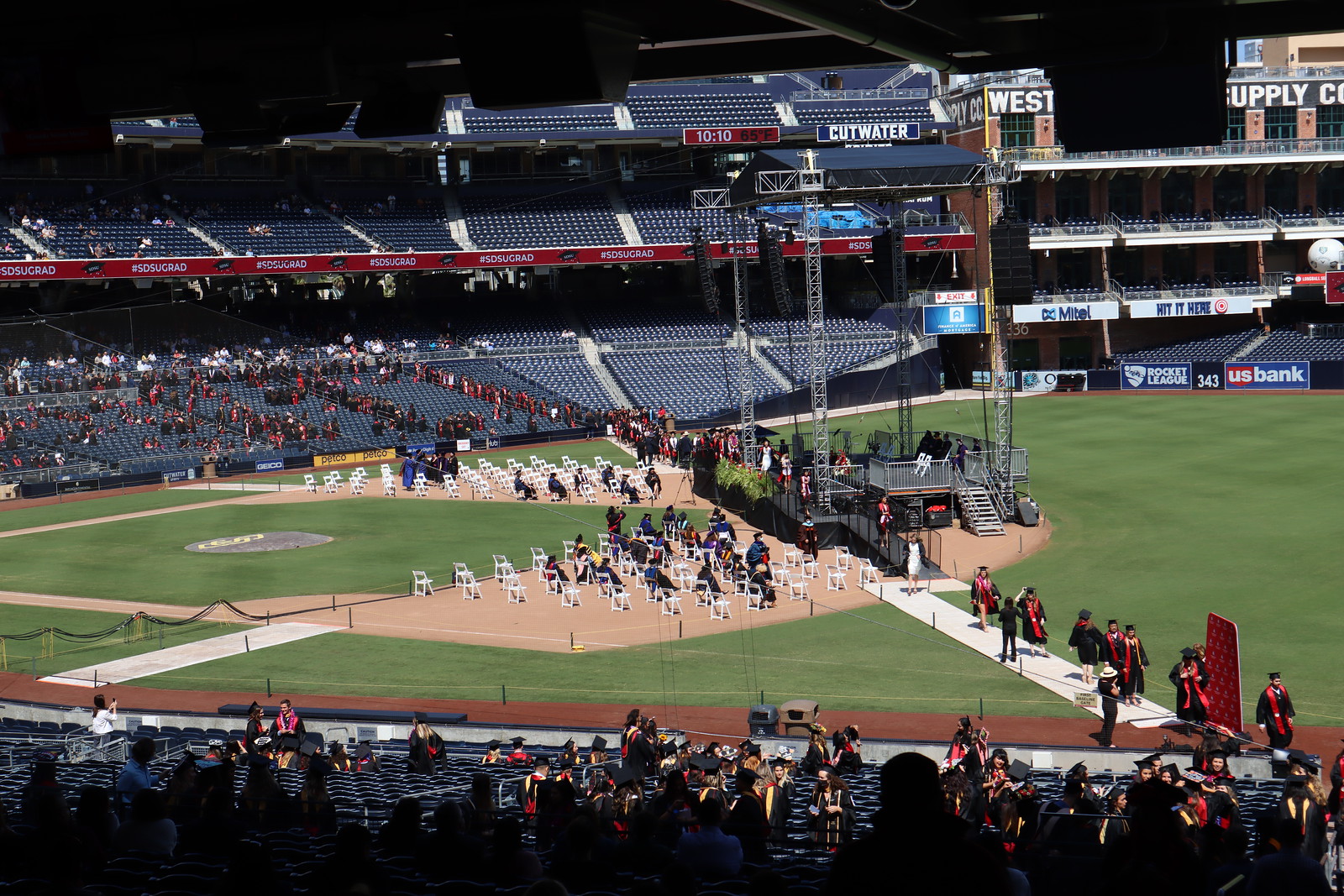
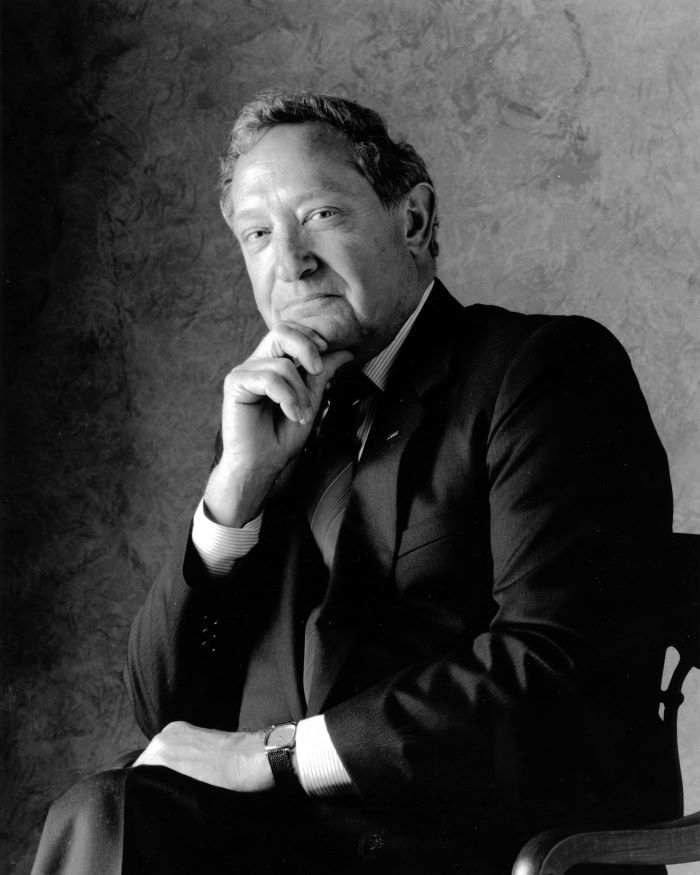 Open the image full screen.
Open the image full screen.
California State University Chancellor. This resulted in President Day retiring several years early. It should be noted, however, that his interaction with the San Diego community was strong and many administrators were steadfastly loyal to him. He robustly supported retired faculty and staff, and frequently attended their events. Day also found great satisfaction in the accomplishments of students, and he was extraordinarily proud of his nine children. One son, Adam Day, serves as a member of the CSU Board of Trustees. President Day was predeceased by his wife, Anne, and daughter, Sara.
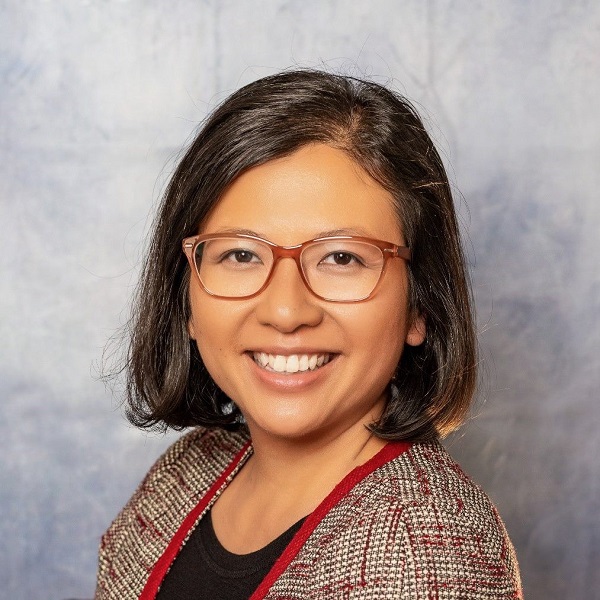
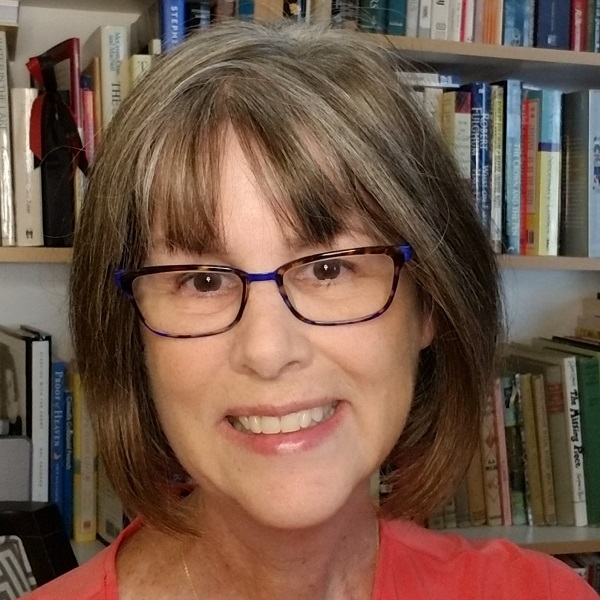
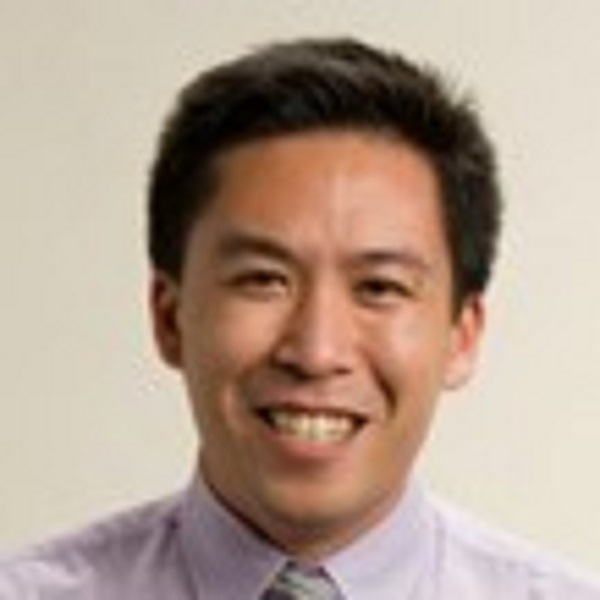
On December 7, 2021, professor Kathee Christensen died.
A faculty member in SDSU’s School of Speech, Language, and Hearing Sciences program, where she led the Deaf and Hard of Hearing Credential and Master’s Degree program for numerous years, she served SDSU from 1978 until 2006, when she retired. Kathee continued her work with the deaf population at the San Diego Museum of Art, where she volunteered as a docent and worked to develop tours with American Sign Language (ASL). Kathee was an extraordinary educator, philanthropist, social causes advocate, and good friend to many. She will be dearly missed.
2022
In 2022, San Diego State University celebrated its 125th Anniversary, marking the occasion by hosting the beginning of a 20-month remembrance. The 20-month period covers the initial period in 1897, when the institution was founded as the Normal School, and 1898, the first day of classes. Dr. Adela de la Torre, President of SDSU, proudly announced the kick-off celebration on the day of March 14 at the Conrad Prebys Center, followed by a thank-you reception for SDSU volunteers that evening. The following day, the SDSU Retirement Association held an anniversary event, also attended by President de la Torre. Among other anniversaries of note were the upcoming Associated Students Mission Bay Aquatic Center’s 50th Anniversary on May 21, 2022; Associated Students 90th Anniversary in the Fall, 2022, and the Associated Students Children’s Center 50th Anniversary in April 2023. Professor of Anthropology and SDSU official Historian. Seth Mallios spoke about the 125-year SDSU history at the opening ceremony.
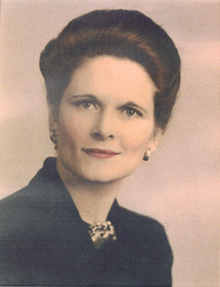
Special appreciation is extended to Michael Huang and Rofiee Harun, without whom this history could not have been completed.
- Source of date of terrorist attack: U-T SD, Monday, September 3, 2012 in history timeline. Also appeared in March 14, 2010 U-T SD Sadanand Singh obituary”
- Marlowe Fischer, “In memory of Sadanand Singh” CSHA Magazine, summer 2010, p. 15 (pdf)
- SDSU course catalogs
- Raymond Starr, A History of Word and Image, p. 153
- SDSU Report, spring, 1985, pp. 10 & 11
- Barry W. Jones, “From a Faculty Father” SDSU Parenthetically Speaking, June 1986 (pdf)
- Interview of Dr. Kramer in fall, 2012
- Sandra Millers Younger, “Hearing with the Heart,” SDSU 360 Magazine, spring 2012
- U-T San Diego, Saturday, April 7, 2012
- SRS printed proceedings for 2008-2013
- Interview of Penny Cohen on December 7, 2012
- Carole Roth, ASHA online article, July 2012
- U-T SD, May 25, 2012, pp. A-1 & A-9
- ASHA LEADER, June 5, 2012, ASHA Convention insert
- Postscript, Vol. XXVII, spring, 2012
- Maureen Magee, “N Educational Ties,” U-T SD, July 16, 2012
- U-T S.D, May 18, 2013
- Gary Warth, “SDSU, MIRAMAR KICK OFF GRADUATION,” U-T SD, Saturday, May 16, 2015, section B-1 & B-5
- “Clinical and Cognitive Neuroscience Sees a Bright Future” The Pulse, January 5, 2016
- School of Speech, Language Hearing Sciences Home page News & Announcements
- Carl Prine, “Navy’s Top Doc Revamps Military Medicine,” The San Diego Union-Tribune, December 12, 2016, p. A-1 & A-8
- Gary Warth, “Departing president: It was time to go,” The San Diego Union-Tribune, May 5, 2017
- Home/News & Announcements online, SLHS, November 7, 2017
Photos of Dr. Sadanand and Kala Singh, Professional Colleagues Visit the Communications Building, Dr. Barlow, Dr. Seitz, Dr.Kramer, SLHS Faculty Meeting 1995, Dr. Marilyn Newhoff, Dr. Shapiro, Dr. Guiterrez-Clellen, Dean Wozniak, Dr. Kohnert, Dr. Kopp, New SLHS Building and Clinic 2009, SDSU President Stephen Weber at the SLHS Open House 2009, Ph.D Student Fall Colloquium 2012, Dr. Karen Emmorey, Dr. Tracy Love-Geffen, Dr Wally Wulfeck, Dr. Beverly Wulfeck, Wulfeck Retirement Gift, Dr. Lew Shapiro, Alyssa Yee, Dr. Abel Mills, Ph.D Student Fall Colloquium 2012, Dean Marilyn Newhoff, Makayla Bradford, Speech-Language Awareness and Information Day 2016, Dr. Jessica Barlow, President Hirshman, Dr. Jessica Barlow, SLHS Building in 2015, three photos of 2017 Student Research Symposium, Incoming M.A Students Watching Eclipse, all Courtesy of the School of Speech, Language & Hearing Sciences; Dr. Sadanand Singh image and video clip for Classroom use from SDSU Media and Technology Center; Walter Hepner, SDSC President, and photo of Dr. Edmund Thile from SDSU Special Collections; Darlene Davies, Virginia Puich, Elizabeth Ecke, Nancy Reed Gibson, Dr. Sue Earnest, Courtesy of Nancy Reed Gibson; Navy Hospital Speech and Hearing Clinic 40th Anniversary, Courtesy of Jo Cormier; Sheila Lipinsky, Courtesy of SDSU Bridges; Bailey Byers, Makayla Bradford, Brittany Sharp, and Jasmin Shores, Courtesy of Angelica Killion for SDSU Mortar Board; Clay Gateway and SDSU President Adela de la Torre from SDSU News Center; Leilani Melendrez, Dr. Sonja Pruitt-Lord, Alyssa Pitts, Dr Jessica Barlow, Courtesy of SDSU Mortar Board
Contact Us
SDSU Speech Language and Hearing
San Diego, CA 92182-1518
